#Venue Management Software
Explore tagged Tumblr posts
Text
Introduction

The Shift Toward Digital Planning
Imagine trying to run a marathon in flip-flops. That’s what event planning feels like without the right tools. As the demands for precision and personalization grow, so does the need for planning event software that is flexible, reliable, and powerful.
Why Event Tracking Software Matters
Event tracking software plays a crucial role by giving planners real-time updates, data-driven insights, and streamlined communication channels. Whether you’re tracking RSVPs or monitoring budget allocation, these systems keep everything in check.
Wedding and Event Planning Software 2025: What’s New?
The latest generation of wedding and event planning software 2025 has moved beyond basic task management. With AI features, timeline automation, and cloud-based integrations, these tools are now intuitive co-planners. They help you make smart choices and stay ahead of deadlines without the headache.
Top Benefits of Using Wedding Event Planning Software
Let’s break down the perks of modern wedding event planning software:
Centralized communication with clients and vendors
Detailed guest management with RSVP tracking
Budget calculators and payment schedules
Design boards and floor plan tools
Timeline generators to keep things on track
With tools like these, planners are empowered to focus more on creativity and client experience.
Features to Look for in Event Planning Softwares
When comparing event planning softwares, prioritize these key features:
Real-time collaboration tools
Budget and invoice management
Task automation and reminders
Vendor databases and contracts
Reporting dashboards for insights
The best Software for planning events should simplify complexity, not add to it.
Innovative Wedding Venue Management Software Options
Innovative Wedding Venue Management Software includes tools designed to handle reservations, customize layouts, and maintain clear communication with clients. These platforms integrate seamlessly with other tools, saving time and eliminating double bookings.
Best Wedding Venue Management Software in the USA
In the crowded American market, here are top performers for best wedding venue management software:
Event Temple — Focused on CRM and lead management
VenueOps — Designed for larger venues needing customization
Skedda — Great for calendar-based space booking

The Rise of Wedding Planner Computer Software
Professional planners need more than spreadsheets. Wedding planner computer software provides an integrated solution to handle design inspiration, schedules, vendor lists, and client portals. It’s like having a digital assistant that never sleeps.
Online Event & Wedding Planning Software Trends
Planning doesn’t stop when you leave your desk. Online event & wedding planning software allows teams and clients to stay connected anytime, anywhere. These cloud-based platforms ensure that changes are instantly updated and visible to all.
Wedding Planning Software for Wedding Planners
The phrase may sound redundant, but wedding planning software for wedding planners is its own specialized category. It’s tailored to help professionals manage multiple clients, track lead pipelines, and brand their planning experience. Tools like Aisle Planner, HoneyBook, and Planning Pod dominate this space.
Choosing the Right Event Planning Software for Wedding Planners

Event Venue Planning Software Essentials
Event Venue Planning Software allows venues to optimize layout designs, manage bookings, and integrate with catering or staffing services. The software is often used alongside planning tools, offering a full-circle solution to event execution.
Growing with Event Planning Business Software
If you’re running a planning business, event planning business software becomes a necessity. It handles invoicing, CRM, marketing automation, and team task management. With the right tool, small operations can scale efficiently and professionally.
Is All in One Event Planning Software the Right Fit?
For many, switching between apps kills productivity. That’s why all in one event planning software is gaining popularity. These platforms combine budgeting, guest management, timelines, communication, and design features in one dashboard. It’s like going from a flip phone to a smartphone overnight.
The Future of Event Planning with Innovative Management Software

Conclusion
Event planning in 2025 is no longer about juggling checklists and chasing confirmations. It’s about using powerful, efficient tools like event tracking software, Innovative Wedding Venue Management Software, and wedding & event planning software USA to create unforgettable experiences with less stress. Whether you’re a solo wedding planner or a venue manager, the right planning event software can turn chaos into clarity.
And the best part? Most of this software is built with the user in mind — meaning you don’t need to be a tech genius to use it. Just pick the tool that matches your needs and start planning smarter today.
FAQs
1. What is the best wedding venue management software available in the USA? Top options include Event Temple, VenueOps, and Skedda — all leaders in best wedding coordinator software venue management software tailored to American event spaces.
2. Is wedding and event planning software 2025 different from older versions? Yes, Event Planning with Innovative Management Software and event planning software 2025 includes advanced features like AI, automation, and real-time collaboration, making it smarter and more efficient than previous versions.
3. Can online event & wedding planning software work offline? Most online event & wedding planning software is cloud-based, but some offer limited offline functionality with automatic sync when reconnected.
4. What is the advantage of using all in one event planning software? All in one event planning software reduces the need for multiple tools, making it easier to manage budgets, guest lists, and timelines in one place.
5. Are event planning business software platforms affordable for startups? Yes. Many event planning business software options offer flexible pricing plans or free trials suitable for small teams and startups.
0 notes
Text
Solving Arcade Payment Challenges: The Shift from Tokens to Tap-to-Play
The transition from tokens to tap-to-play solutions in arcades is addressing long-standing challenges like lost coins and operational inefficiencies.
By moving to swipe cards and RFID systems, arcades can now offer a faster, smoother experience for players while streamlining internal management. This shift also enhances data tracking, giving arcade operators valuable insights into customer preferences and spending patterns.
With the introduction of contactless payments, arcades can reduce cash handling risks and improve security, ensuring both players and businesses benefit from these modern advancements. The evolution of arcade payment systems is shaping a more efficient and enjoyable future for indoor gaming.
0 notes
Text
Introducing HeadBox 3D Studio: The Future of Immersive Events - Interview With the CEO
HeadBox, Australia’s leading digital meetings and events platform, is raising the bar with its latest innovation—HeadBox 3D Studio. This state-of-the-art software promises to transform how venues and events teams create and share proposals, offering a unique, personalised experience through interactive 3D tours embedded with AI-generated narrator videos. A New Era for Venues and Hotels For the…
#3D Studio#AI#AI narration#AI technology#AI tools#AI-driven#digital#digital proposals#Eco-Friendly#event management#event planning#event solutions#event tech#event venues#events#global clients#guided tours#HeadBox#HeadBox platform#hospitality#hospitality tools#hotel tours#hotels#immersive#immersive experience#innovation#international clients#language barriers#meeting software#meeting tools
0 notes
Text
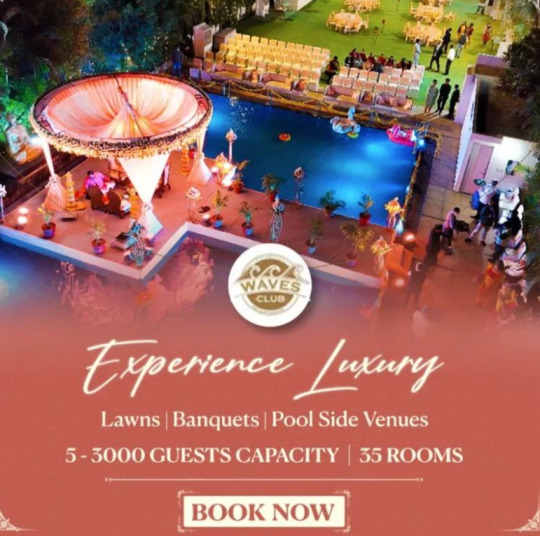
India's Best Banquet Management Software | Wedding Venue Software.
Optimize Banquet Management with House of Banquet – India's best Banquet Management Software. Elevate weddings seamlessly with our advanced Wedding Venue Software.
0 notes
Text
Events and meetings Services | Contact Us today | Tripkartz
Corporate Meetings Planning and Exceptional Meeting Venues | TripKartz
Unlock success with TripKartz’s dedicated corporate meeting planning and outstanding meeting venues. Elevate your events and meetings with our expert solutions.
Meetings — A venue for every occasion
Despite the setting or the number of participants, what makes a meeting successful is the coordination and professional execution. We will apply our experience and sourcing network in India across cities or for any global destination with ease.
We focus on the details to fulfill your objectives
Board meetings
Trainings
Press and Media Meets
Buyer meetings
Review Meets
Recruitment Drives
Incentives — Make Business a delight
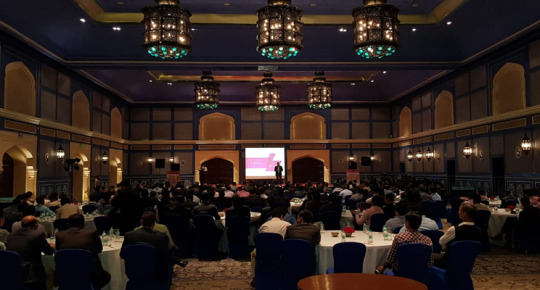
Our experts will add elements of fun, reward and surprise
Sales recognition
Client loyalty program
Team Engagement
Performance Reward
Events — Creatively customized
Whether it is an exotic destination or not, our team will ensure that we make the event memorable and unique. We work closely with Domestic and international convention spaces and offbeat venues to ensure that every event is unique , creative and executed successfully.
We emphasis on where it is needed ie your customers and products.
Product launches
Award ceremonies
Cocktail Events
Annual and Festive events
Registered Office
2nd floor, Day Star Building, 10th cross Pampa Ext, Kempapura, Hebbal, Bangalore — 560024 Karnataka, India Tel No — +91 9591775553/ +91 9513921785
#business hotels#Keyword#corporate travel management companies in bangalore#travel management companies in bangalore#corporate meetings#Business events#events and meetings#"corporate travel agents#event venues#meeting venues#meetings and events planning#conference management#extended stay hotels#corporate meetings planning#business transportation#corporate events#corporate event management company#corporate travel management#corporate events and meetings#conference management software#corporate transportation#business car rentals#corporate travel agents#corporate hotels#conference venues
0 notes
Text
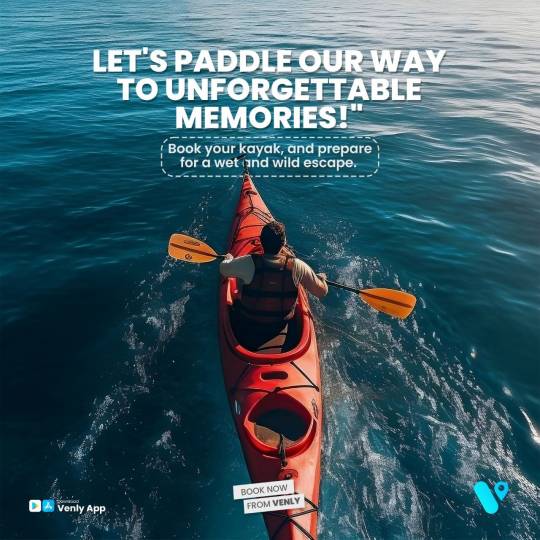
Embark on Your Next Adventure! Book Now and Explore the Uncharted. Book a paddle through the Venly app to relax and enjoy nature's masterpiece. Become an explorer today… Visit our website now : https://venlyapp.com/blog/what-can-i-find-on-venly/
0 notes
Text
Which Education🎓📚 is right for you?
Mercury rules your interest and consequently which type of course you would select.
Now you have to see how Mercury is placed. For example if Mercury is conjunct Moon it would have same effect as Mercury in Cancer or Moon opposite Mercury.
Mercury -Sun: It is called Budh Aditya yoga. These people can shine in political science, geology, sociology, medicine and they can be good leaders too. They may prepare for competitive exams.
Mercury-Moon: Some changes or confusion in choice of course. Can study more than one subject but both vastly different from each other. Chemical, hotel management, nutrition, chef, psychology, tarot and intuitive studies.
Mercury-Mars: Some obstacles in education, breaks and interruptions (dropping classes), engineering (especially related to machines, drawings, plans, civil, electronics), medicine (especially related to surgery), fire and safety engineering,
Mercury-Venus: Sales, marketing, HR, interior designing, makeup courses, all type of fine arts, vocational courses, acting courses.
Mercury-Saturn: Engineering (like construction , petroleum, mining core subjects), structural engineering, drafting, administrative studies.
Mercury-Jupiter: Finance, CPA, CMA, accounting, teaching, law field, journalism, VJ, pilots, aeronautical.
Mercury- Rahu: Chemical, nuclear subjects, cinematography, software courses, digital marketing, share markets, computer hardware, import export, AI, Machine Learning courses.
Mercury-Ketu: Computer coding, electrical engineering, bio technology, astrology, virology, research oriented fields.
For Readings DM
#astrology#astrology observations#zodiac#zodiac signs#astro community#astro observations#vedic astrology#astro notes#vedic astro notes#astrology community#mercury signs#mercury in aquarius#mercury retrograde#pisces mercury
862 notes
·
View notes
Text
The end of Oasis: the truth
Guitar smashing and recriminations... The events and causes of the bust-up that ended with Noel Gallagher walking out
Pete Paphides
Friday September 04 2009, 1.01am BST, The Times
Like a Cassandra to his own Trojan war, it might just be that last year Liam Gallagher saw the events of the past few weeks advancing over the horizon and felt unmoved to avert them. If, as sources close to the band suggest, the rest of Oasis plan to continue beyond Noel Gallagher’s departure, then the Liam-penned final tune on last year’s Dig Out Your Soul will assume some prescience. “Who’s to say/You were right/And I was wrong?/Soldier on.” Would they dare to, though? What kind of an ego would it take to continue Oasis without their songwriter Noel Gallagher, the man who gave them Live Forever, Wonderwall and Supersonic?
There’s no shortage of anecdotal material to suggest that Liam has succumbed to many of the clich?s that surround the pampered rock frontman. Own dressing room? Check. Boutique clothing range? Check. Personal security guard? Check. From here, it would be natural to infer a gulf that has Noel and the rest of Oasis on one side and Liam — who has long since relinquished even the need to be present at soundchecks — on the other. And yet it’s worth noting that — in the wake of the fight that nixed their appearance at Friday’s Paris en Seine festival — Liam and his wife Nicole Appleton high-tailed it to Lake Como in Italy with the Oasis bassist Andy Bell and his girlfriend in tow. According to one insider: “People are scared of Liam. And if he wants to carry on the band, Andy and [guitarist] Gem Archer will probably go along with it.” In the statement released hours after the Paris altercation, Noel pronounced himself disappointed with the “lack of support and understanding from my management and bandmates that left me with no other option than to seek pastures new”.
The history of brothers in bands — from the Bee Gees to the Kinks — is dotted with recriminations and subsequent reconciliations. Oasis have had their fair share, most seriously in Barcelona nine years ago, when Liam goaded his brother by casting doubt on the legitimacy of Noel’s daughter Anaïs. Wasn’t there every reason, then, to assume that these latest wounds would also heal? Their mother Peggy seems to think so. “They love each other,” she says. “They’ve had fights before and got over it.”
Mothers often know best, but mothers are also rarely able to view their children’s spats as, well, anything more than children’s spats. In the wake of Oasis’s no-show at the V Festival — attributed to Liam’s laryngitis — the singer had seemed similarly keen to play down rumours that the band’s future was in jeopardy. Bypassing the spellchecking software on his phone, he issued a reassuring tweet to his fans: “The voice may of disappeared, but I’m still here ... I’m gutted your gutted what can I say f*** all at the moment.”
Friends of the guitarist, however, were left with an altogether graver picture. Noel told friends that Oasis would never play a British show again, the implication being that if they could just see out their remaining European festival shows, he could walk away quietly. If Oasis had fulfilled the Paris obligation, they would have had just one more show left to play.
So what happened at Rock en Seine to tip Noel over the edge? Despite occupying the neighbouring dressing room, the New York band Vampire Weekend have kept their counsel, merely hinting at the weirdness of coming off stage following a triumphant set to encounter ugly scenes. The Scottish singer-songwriter Amy McDonald was less discreet: “Oasis cancelled again, with one minute to stage time! Liam smashed Noel’s guitar, huuuge fight!”
Speaking to The Times, a source close to Noel said: “The problems began even before Liam arrived in Paris. He travelled separately from the band, as he does these days, on Eurostar. By the time he got to the venue he was his usual confrontational self. He said things about Noel’s family and made pointed personal insinuations about Sara [MacDonald, Noel’s partner].” What we now also know is that the guitar smashing involved an acoustic guitar given to Liam by Appleton, to which Noel laid waste before walking away.
In any band of Oasis’s stature there are usually systems in place to stop the build-up of tensions. If pre-gig drinking has the potential to become an issue, management and the security staff employed by them can ensure that group members make it onstage in a state of relative sobriety. In the days when Liam Gallagher was merely the frontman with Oasis, such matters would have been dealt with by the group’s management company, Ignition. In 2009, however, things have ceased to be as simple. Accompanying Gallagher on Eurostar was Stevie Allen, Liam’s personal security guard and the business partner with whom the singer set up his clothing line Pretty Green. As anyone who has kept up with Liam’s Twitter updates this year will know, the singer’s enthusiasm for Pretty Green seems, at times, to have eclipsed his enthusiasm for his band.
Sources close to Noel say that he is furious at what he sees as Liam’s willingness to use the goodwill earned by Oasis’s music to sell clothes. The confusion between Liam’s band and brand was further heightened by the singer’s recent interview with NME, arranged through the PR he uses for Pretty Green. Parading various garments on his label, Liam confirmed that the pair were no longer on speaking terms, alleging: “It takes more than blood to be my brother.”
Others have questioned the wisdom of a band with Oasis’s fractious history committing to a ten-month world tour — not least because of issues around the recording of Dig Out Your Soul that were still not resolved before its release. After eight weeks of sessions at Abbey Road studios, Liam had yet to record a single vocal. Speaking to Q magazine, Noel revealed that Liam waited until mixing for the album commenced in LA before recording his vocals. Even then, halfway though the fortnight-long stay in LA, Liam fled to London, saying he had “some business to attend to”. This, it turns out, was his wedding to Appleton, to which none of his bandmates had been invited. As a result, Noel told Q, the band were forced to shelve two album tracks, including “an epic, Champagne Supernova song with backwards Are You Experienced-type rhythms” and a 50-piece choir. Anything but contrite, Liam tweeted: “A 50-piece choir on it ... more like 50 shit guitar solos on it.”
And that’s the way it’s been with the Gallaghers this year. “He’s constantly going on about how much soul he’s got,” Noel said. “I assume Bob Marley had soul ... I don’t see Bob Marley at the Rainbow [the scene of the famous Wailers concert in 1977] wailing about the colour of the napkins in his dressing room.”
Paul Rees, the editor of Q, remembers being struck by the way that, throughtout their interview, Noel kept bringing the subject around to his brother. “He seemed so tired,” Rees says. “People who have seen them on tour this year have noticed that he seems to be going through the motions.”
Beneath the weariness, however, is hurt. “He’s never seen my little lad [one year-old Donovan]. Just pictures,” Noel confided (a claim strenuously refuted by Liam). “If you were in the circle of people that we are in, you wouldn’t have him in the house if he spoke to you the way he speaks to me and my family.”
One bone of contention appears to be MacDonald herself, who Liam is said to have consistently sought to antagonise. “At the Brits in 2007 Liam snatched her glass of wine and allowed it to smash at her feet,” one insider alleges. And the source of the acrimony? “They move in different circles. Sara knows journalists and people in the media. He sees her as sleeping with the enemy. Liam seems to prefer celebrities. He’s friends with Gok Wan and Holly Willoughby. Noel, meanwhile, prefers the company of musicians.”
Rees echoes the sentiments: “Noel has always been keen to broaden his musical horizons — perhaps more than Oasis would allow at times.” The man who discovered Oasis, Alan McGee, reckons it’ll be less than five years before the brothers end up on the same stage together. Friends of Noel suggest that ten years is a more realistic assessment. But If Liam’s ego has spiralled out of control, Noel may want to stop and consider whether he inadvertently had a hand in the process. Seven years ago, when his younger brother brought his maiden songwriting effort Little James to the table, Noel encouraged him to write more. Now, with three creditable efforts on Dig Out Your Soul, it’s conceivable that Liam — who, lest we forget, started Oasis without his brother — feels bold enough to carry the burden of their reputation.
In a funny way, he may even have a point. In this divorce, Liam may come off surprisingly well — at least in monetary terms. It may not excite the critics, but an Oasis that functions as a travelling jukebox — Britpop’s first heritage act — may play in Liam’s favour. Hard to imagine? Go and see Oasis live and the beery mass you see bellowing the words to Wonderwall bear far greater resemblance to Liam than Noel. Will they mind if Oasis never record another note? Or do they just want to party like it’s 1995?
#2009#paris#the breakup#whole band#noel interview#noel on liam#others on nl#pretty green#liam tweets#dig out your soul#things#this has got to be somewhere on someone's blog but i checked a few places and couldn't find it#i didn't make it past the first paragraph before i realized whose camp put this one out#liam was the one traveling separately? oh really tell us more about that#a really fun detail is that the whole liam-smashing-the-wine-glass thing was what like hours after noel said he'd send liam a valentine
20 notes
·
View notes
Text

The Best Album Cover Shoots – in pictures
From the Beatles crossing a zebra to a naked Prince, via Grace Jones attempting the anatomically impossible and Led Zeppelin’s New York tenements, these cover designs became as famous as the music they enclosed 🎶🎵👏
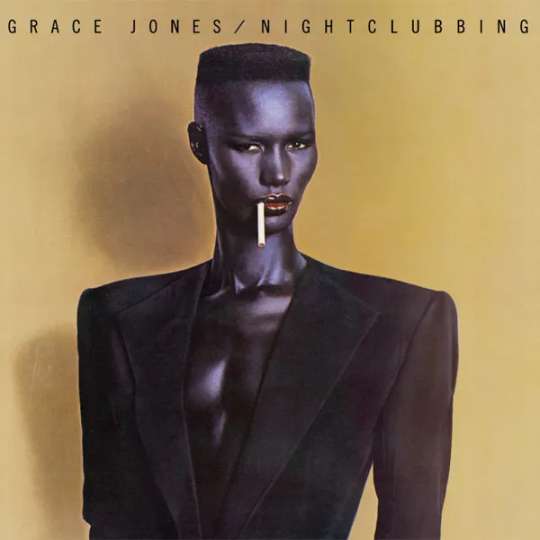
Grace Jones – Nightclubbing, Island Records, 1981, by Jean-Paul Goude
Nightclubbing's iconic artwork is a 1981 painted photograph titled Blue-Black in Black on Brown, created in New York by Goude. This was the singular image that accompanied the original LP, as it "was concealed in a plain, black inner sleeve, no lyrics and with no photo on the back cover." Composed by right angles, the photograph shows Jones cut to waist, bare chested, and dressed in an Armani man's wide shouldered suit, with an unlit cigarette aiming downward from her lip. She is shot with her signature flat top haircut and her chest bones showing; her dark skin confers upon the image a violet, blue-black colour. The image is noted for its androgyny, with Jones not only "[unpicking] some of the boundaries of unconventionality, but [choosing] to confuse such boundaries." Rick Poynor writes: "Goude admired Jones for her mixture of beauty and threat, and the Nightclubbing portrait expresses this duality with absolute composure and no false histrionics." Piers Martin of Uncut felt the cover was "arresting", and wrote: "the indigo mood, cool gaze and cigarette suggested Marlene Dietrich, the gender-bending a touch of Bowie."

Prince – Lovesexy, Paisley Park, 1988, by Jean-Baptiste Mondino (design by Laura LiPuma)
The artwork of Lovesexy sparked as much interest as did the music. Mimicking The Birth of Venus by Botticelli, the cover shows Prince reclined naked with a lily stamen suggestively positioned above his groin. It is an image that captures the LP’s essence of spirituality perfectly. Prince had even denied Warner’s management sight of the cover prior to the album’s retail release. The image was deemed far too risqué for 1988 and prompted many retailers to conceal the artwork under black plastic wrapping (Wal-Mart refusing to stock it at all) or keeping it behind the counter, deeming it too provocative to display in store. It is likely this hindered sales of the album in the more conservative leaning US. The shot is the work of fashion photographer Jean-Baptiste Mondino, Prince’s first choice to direct Under The Cherry Moon but was unavailable. Mondino would instead direct the video Mia Bocca for Jill Jones which led to doing likewise with I Wish U Heaven for Prince. He would also shoot promos for Neneh Cherry (Manchild) and Madonna’s Justify My Love. During a breakfast in LA, Prince asked Mondino if he would shoot the album’s cover. The image was captured in LA, with the lilies and stamen added at Mondino’s studio back in Paris using Paint Box software, a forerunner to Photoshop.
Mondino’s cover is the sole promotional image shot for the album – its back cover and inner sleeves feature the tracklisting and lyrics hand drawn by Margo Chase. With no alternative shots available and keeping with the theme of nakedness, the singles Alphabet St. and Glam Slam were issued without artwork, their transparent sleeves labelled with a sticker. In April 2022 Lovesexy was exhibited at The Photographers’ Gallery in London staged in celebration of the art of iconic album designs.

Boz Scaggs – Middle Man, Columbia, 1980, by Guy Bourdin
Middle Man is the ninth studio album by Boz Scaggs, released by Columbia Records in 1980. Scaggs hired members of the band Toto as session musicians (as he did for Down Two Then Left and Silk Degrees) and shared songwriting credits with them, returning to the commercial, soul-influenced rock of the latter. It would take him eight years to release his following album Other Roads, again retaining the personnel of the three preceding it.
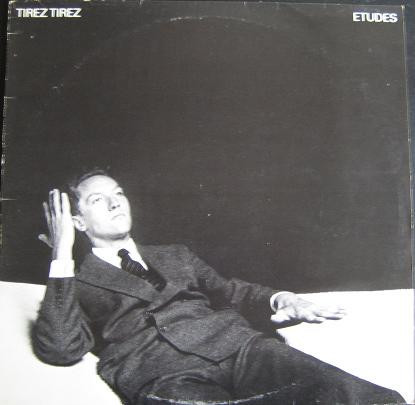
Tirez Tirez – Etudes, Aura, 1980, by Brian Griffin (design by Bill Smith)
Brian Griffin: ‘This photograph was taken in my studio/bedroom at Elsynge Road in Wandsworth [south London] using my bed. The model is Martin Cropper, who I used in my work at the time. It was originally taken for my book Brian Griffin Copyright 1978 and later purchased for the cover by Aaron Sixx of Aura records for Tirez Tirez’.
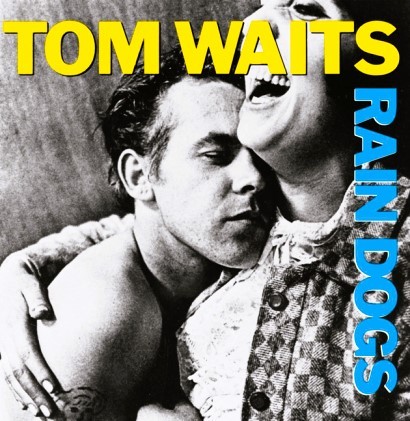
Tom Waits – Rain Dogs, Island Records, 1985, by Anders Petersen
Rain Dogs is the ninth studio album by American singer-songwriter Tom Waits, released in September 1985 on Island Records. A loose concept album about "the urban dispossessed" of New York City, Rain Dogs is generally considered the middle album of a trilogy that includes Swordfishtrombones and Franks Wild Years.
The album, which features guitarists Keith Richards and Marc Ribot, is noted for its broad spectrum of musical styles and genres, described by Arion Berger as merging "outsider influences – socialist decadence by way of Kurt Weill, pre-rock integrity from old dirty blues, the elegiac melancholy of New Orleans funeral brass – into a singularly idiosyncratic American style."
The album peaked at number 29 on the UK charts and number 188 on the US Billboard Top 200. Rod Stewart had success with his cover of "Downtown Train", later included on some editions of his 1991 album Vagabond Heart. In 1989, it was ranked number 21 on the Rolling Stone list of the "100 greatest albums of the 1980s." In 2012, the album was ranked number 399 on the magazine's list of "The 500 Greatest Albums of All Time", and at number 357 in 2020.
Though it has been remarked that the man on the cover bears a striking resemblance to Waits, the photograph is actually one of a series taken by the Swedish photographer Anders Petersen at Café Lehmitz (a café near the Hamburg red-light boulevard Reeperbahn) in the late 1960s. The man and woman depicted on the cover are called Rose and Lilly.
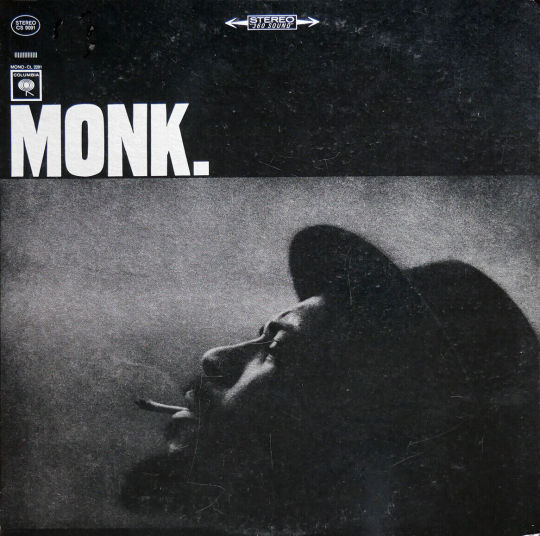
Thelonious Monk – Monk, Columbia, 1964, by W Eugene Smith
Monk. (1964) is the fourth studio album Thelonious Monk released on Columbia Records, and his seventh album overall for that label. It features two original compositions and several jazz standards.
The track "Pannonica" is a tribute to the jazz patron Pannonica de Koenigswarter. The track "Teo" is a tribute to the album's producer Teo Macero.
The album cover is a photo of Monk taken by W. Eugene Smith in 1959. Between 1957 and 1965, Monk and other prominent New York jazz musicians rehearsed at the photographer's home, nicknamed 'The Jazz Loft'.
Photographer and photojournalist W Eugene Smith demanded such perfection of his images that he destroyed most of his early work. He had a vast career and helped define photojournalism through his work at Life magazine, before joining Magnum Photos in 1955. He is remembered as a master both technically and in the darkroom. This photograph is titled Thelonious Monk Rehearsing in the Loft, 1959.
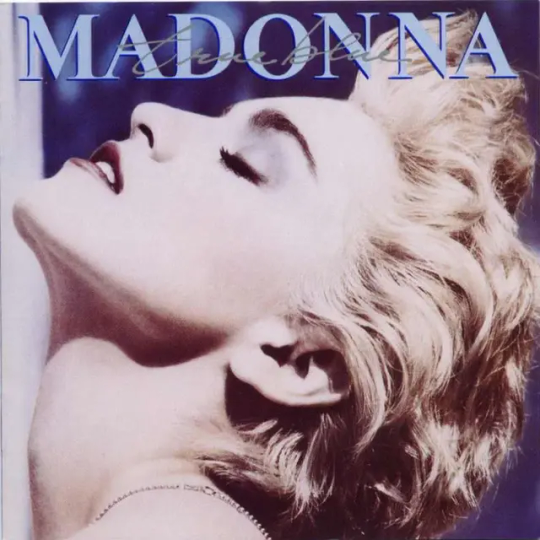
Madonna – True Blue, Sire/Warner, 1986, by Herb Ritts
The album cover was shot by photographer Herb Ritts. It shows Madonna in profile, with her head thrown back and eyes closed against a sky-blue background; her skin is bleached-out, and her hair platinum blonde. Jeri Heiden, who was working at the Warner Bros. art department, was given the task of editing the photos to adapt them into record covers. The final photo was selected by Madonna, Heiden and Jeff Ayeroff, creative director of Warner Bros. at that time. After the image was chosen, Heiden experimented with a variety of treatments of the original, which was shot in black and white, to go along with the album's title, and finally arrived at the final, blue toned, hand tinted version. The album's inner sleeve did not feature any photographs, and instead was dedicated to album credits and song lyrics, since Madonna wanted to be represented by her work rather than her image.
Lucy O'Brien described the cover as a "moment of Warholian pop art. A mixture of innocence [and] idealism […] Our first glimpse of Madonna as a classic icon". For J. Randy Taraborrelli, author of Madonna: An Intimate Biography, the artwork indicated how "[True Blue] was a vehicle of growth for [Madonna]"; the "washed out color photograph" cover was "understated", especially when compared to the "sexier poses" she had been associated with in the past. For Joe Lynch from Billboard, it is one of the greatest album covers of all time.
True Blue was released on June 30, 1986. In the United States and Canada, the cover did not include the singer's name. Heiden explained in an interview with Aperture magazine that the record company thought it would be "cool" to use a shrink wrap on American releases, so that when the public took it off, they'd be left with the photograph of Madonna. In Europe, Warner felt that the name was needed, as they did not want to risk messing with Madonna's popularity. The back sleeve and booklet feature the song titles in Heiden's own handwriting. About cropping the image for the cassette and vinyl releases, Heiden said: "I think the image became more interesting cropped into a square—and at that time we always started with the album cover configuration. It was like she was floating—her clothing was not visible. She took on the appearance of a marble statue—Goddess like. In the vertical cropping you see her leather jacket and the wall, and it becomes more typical, editorial, earthly". On May 22, 2001, Warner Bros. released a remastered edition of the album with two additional remixes of "True Blue" and "La Isla Bonita". Twenty years later, a 35th anniversary edition was released; it includes additional remixes, dub and instrumental versions. It was reissued on crystal clear vinyl on November 8, 2019.
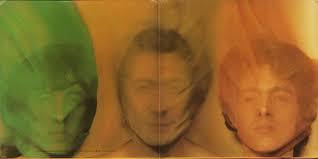
The Rolling Stones – Goats Heads Soup, The Rolling Stones Records, 1973, by David Bailey (design by Ray Lawrence)
Goats Head Soup is the eleventh studio album by the English rock band the Rolling Stones, released on 31 August 1973 by Rolling Stones Records. Like its predecessor Exile on Main St., the band composed and recorded much of it outside of the United Kingdom due to their status as tax exiles. Goats Head Soup was recorded in Jamaica, the United States and the United Kingdom. The album contains 10 tracks, including the lead single "Angie" which went to number one as a single in the US and the top five in the UK.
The album cover was designed by Ray Lawrence and photographed by David Bailey, a friend of Jagger's who had worked with the Rolling Stones since 1964. The portrait of Jagger on the front cover was approximately life size in the original 12-inch LP format. Jagger was reluctant to be shot enveloped by a pink chiffon veil, which Bailey said was meant to look like "Katharine Hepburn in The African Queen". The album's gatefold has Taylor, Wyman and Watts wrapped in a similar fabric, and Richards on the back. The album's original rejected cover art featured the entire band as centaurs and an image of goat's head soup, a Jamaican dish made from a goat's body parts, such as the head, feet and testicles.
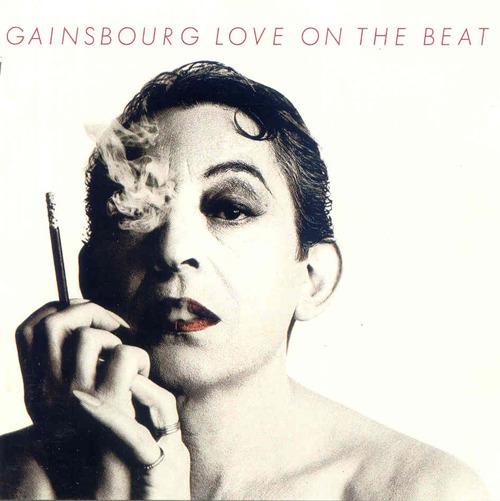
Serge Gainsbourg – Love on the Beat, Philips, 1984, by William Klein
Love on the Beat is the fifteenth studio album by French singer and songwriter Serge Gainsbourg. On this album, Gainsbourg used American musicians to achieve a funk-heavy rock sound. The album was controversial due to its very sexual lyrical content, with homosexuality and prostitution as the subject matters on many of the tracks. Perhaps the most controversial was "Lemon Incest", which was set to Frédéric Chopin's Étude No. 3 and sung as a duet with his then-13-year-old daughter Charlotte Gainsbourg.
French singer Serge Gainsbourg dressed in drag for the cover of Love on the Beat. Gainsbourg gave up alcohol for 12 days ahead of the shoot with legendary photographer William Klein to make himself beautiful.

Grace Jones – Island Life, Island Records, 1985, by Jean-Paul Goude (design by Greg Porto)
Island Life is the first greatest hits album by Jamaican singer and songwriter Grace Jones, released in December 1985, summing up the first nine years of her musical career. The album sits among Jones' best-selling works.
The cover picture is one of the most famous images of Grace Jones and was created by her then-partner Jean-Paul Goude. The impossibly graceful arabesque is actually a montage of separate images, following Goude's ideas on creating credible illusions with his cut-and-paint technique. The body position is "anatomically unlikely".
Jones assigned her then partner, Jean-Paul Goude, to create this cover image for Island Life. In what has become an iconic portrait, Goude compiled several separate snaps of Jones and constructed this lissom and elegant, if anatomically dubious, pose, all before Photoshop existed. ‘Unless you are extraordinarily supple, you cannot do this arabesque,’ Goude has said. ‘The main point is that Grace couldn’t do it, and that’s the basis of my entire work: creating a credible illusion’.
The picture was originally published in New York magazine in 1978 and subsequently used in the music video for Jones' hit single "La Vie en rose". It has been since described as "one of pop culture's most famous photographs". Also included in the album sleeve are other iconic images of Jones, among them the "twins" photograph, Grace Jones in a cage and wearing a "maternity" dress.
The cover picture was featured in Michael Ochs' 1996 book 1000 Record Covers and has been often imitated in works by other artists. The image was also referenced in Nicki Minaj's 2011 music video for "Stupid Hoe", with Minaj mimicking the pose.

Joe Jackson – Look Sharp!, A&M, 1979, by Brian Griffin (design by Michael Ross)
Look Sharp! is the debut album by Joe Jackson, released in January 1979. The album features one of Jackson's most well-known songs, "Is She Really Going Out with Him?", as well as the title track "Look Sharp", "Sunday Papers", "One More Time" and "Fools in Love".
The cover, featuring a pair of white shoes, ranked number 22 on Rolling Stone's list of the 100 greatest album covers of all time.
In 2000, it was voted number 865 in Colin Larkin's All Time Top 1000 Albums.
The photo used on the album's cover was shot by Brian Griffin on London's South Bank, near London Waterloo station. Upon arriving at the South Bank, Griffin noticed a shaft of light landing on the ground and asked Jackson to stand there: the whole process took no more than five minutes. According to Griffin, Jackson hated the record sleeve as it did not include his face, and vowed never to work with Griffin again. Nonetheless, the album artwork became one of the nominees for the 1980 Grammy Award for Best Recording Package.
Some observers didn't understand the tongue-in-cheek nature of Jackson's choice of title and cover art—an early reviewer in New Musical Express said they "suggest an obsession with style" and sniffed that Jackson sported "a pair of white side-lace Denson winklepickers that are, unfortunately, not nearly as cool as he evidently thinks they are". As time went on, journalists became more familiar with his youthful lack of interest in fashion, and The Face noted how most agreed with the general summation of him as a "sartorial disaster area".
Brian Griffin: ‘This was shot on London’s South Bank, which you could say was my open-air studio, as I did not have a studio then. I fell in love with the quality of light that pervaded there. It was the fastest album cover shoot that I ever did, maybe it took four minutes. I saw this patch of light making a pattern on the paving and said to Joe: “Stand there!”’

Diana Ross – Silk Electric, RCA, 1982, by Andy Warhol (photograph and design)
Silk Electric is the thirteenth studio album by American R&B singer Diana Ross, released on September 10, 1982, by RCA Records. It was Ross' second of six albums released by the label during the decade. It reached No. 27 on the US Billboard 200 (No. 5 R&B), No. 33 in the UK Albums Chart and the Top 20 in Sweden, Norway and the Netherlands. The album cover was designed by Andy Warhol.
The album contains Ross' US Top 10, Grammy-nominated single, "Muscles", which was written and produced by Michael Jackson. All other tracks were produced by Ross, including the US Top 40 follow-up single "So Close" featuring prominent background vocal arrangements by Luther Vandross.
The song "In Your Arms", written by Linda Creed and Michael Masser, was covered by Teddy Pendergrass and Whitney Houston as "Hold Me" the following year. The song "I Am Me" was co-written by Ross (and incorrectly listed as co-written by Cindy Birdsong instead of Janie Bradford on the Greatest Hits: The RCA Years compilation album). The album was certified Gold in the US and Silver in the UK.
The album was remastered and re-released on September 2, 2014 by Funky Town Grooves as an "Expanded Edition", with bonus material.
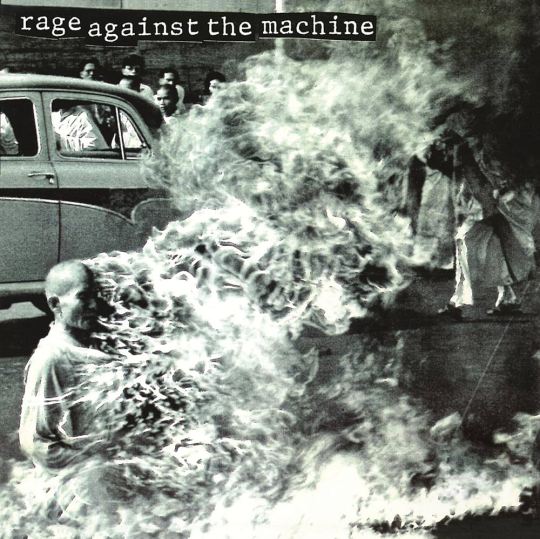
Rage Against the Machine – Rage Against the Machine, Epic, 1992, by Malcolm Browne
Rage Against the Machine is the debut studio album by American rock band Rage Against the Machine. It was released on November 6, 1992, by Epic Records, four days after the release of the album's first single, "Killing in the Name". The album was based largely on the band's first commercial demo tape of the same name, completed 11 months prior to the album's release. The tape contained earlier recordings of seven of the ten songs.
The cover features a crop of Malcolm Browne's famous photograph of the self-immolation of Thích Quảng Đức, a Vietnamese Buddhist monk, in Saigon in 1963. The monk was protesting against President Ngô Đình Diệm’s administration for oppressing the Buddhist religion. In 1963, Browne’s photography and coverage of the event earned him the World Press Photo of the Year award.
The songs on Rage Against the Machine all feature political messages. Activists such as Provisional IRA hunger striker Bobby Sands and Black Panther Party founder Huey P. Newton are listed in the "Thanks For Inspiration" section. Also thanked were Ian and Alec MacKaye.
The lyrics for each song were printed in the album booklet with the exception of those for "Killing in the Name", which were omitted; the booklet reads "2. KILLING IN THE NAME", skips the lyrics and continues with the next song.
The statement "no samples, keyboards or synthesizers used in the making of this record" can be found at the end of the sleeve notes. Similar statements were made in the band's subsequent albums. The band also refer to themselves as "Guilty Parties" for each album.
The album was a critical success upon release, with several critics noting the album's politically motivated agenda and praising frontman Zack de la Rocha's strong vocal delivery. Ranked number 24 on Rolling Stone's list of the "100 Greatest Metal Albums of All Time", the album peaked at number 1 on the US Billboard Heatseekers chart and number 45 on the US Billboard 200 and has gone on to achieve a triple platinum sales certification from the Recording Industry Association of America (RIAA) in the US. Multiple publications have ranked it as one of the best albums of the 1990s. In 2020, it was ranked 221 in Rolling Stone's updated list of the "500 Greatest Albums of All Time".

The Beatles – Abbey Road, Apple, 1969, by Iain Macmillan (design by John Kosh)
Abbey Road is the eleventh studio album by the English rock band the Beatles, released on 26 September 1969, by Apple Records. It is the last album the group recorded, although Let It Be (1970) was the last album completed before the band's break-up in April 1970. It was mostly recorded in April, July, and August 1969, and topped the record charts in both the United States and the United Kingdom. A double A-side single from the album, "Something" / "Come Together", was released in October, which also topped the charts in the US.
Apple Records creative director Kosh designed the album cover. It is the only original UK Beatles album sleeve to show neither the artist name nor the album title on its front cover, which was Kosh's idea, despite EMI saying the record would not sell without this information. He later explained that "we didn't need to write the band's name on the cover […] They were the most famous band in the world". The front cover was a photograph of the group walking on a zebra crossing, based on ideas that McCartney sketched, and taken on 8 August 1969 outside EMI Studios on Abbey Road. At 11:35 that morning, photographer Iain Macmillan was given only ten minutes to take the photo while he stood on a step-ladder and a policeman held up traffic behind the camera. Macmillan took six photographs, which McCartney examined with a magnifying glass before deciding which would be used on the album sleeve.
In the image selected by McCartney, the group walk across the street in single file from left to right, with Lennon leading, followed by Starr, McCartney and Harrison. McCartney is barefoot and out of step with the others. Except for Harrison, the group are wearing suits designed by Tommy Nutter. A white Volkswagen Beetle is to the left of the picture, parked next to the zebra crossing, which belonged to one of the people living in the block of flats across from the recording studio. After the album was released, the number plate (LMW 281F) was repeatedly stolen from the car. In 2004, news sources published a claim made by retired American salesman Paul Cole that he was the man standing on the pavement to the right of the picture.
Although Abbey Road was an instant commercial success, it received mixed reviews upon release. Some critics found its music inauthentic and criticised the production's artificial effects. By contrast, critics today view the album as one of the Beatles' best and one of the greatest albums of all time. George Harrison's two songs on the album, "Something" and "Here Comes the Sun", are considered among the best he wrote for the group. The album's cover, featuring the Beatles walking across the zebra crossing outside of Abbey Road Studios (then officially named EMI Studios), is one of the most famous and imitated of all time.

Graham Parker and the Rumour – The Parkerilla, Mercury, 1978, by Brian Griffin (design by Barney Bubbles)
The Parkerilla is a 1978 live double album by Graham Parker and The Rumour. It was recorded at Winter Gardens, Bournemouth, Manchester Opera House, Apollo Theatre, Oxford and The Palladium, New York City; and mixed at Rockfield Studios, Wales.
The album was recorded as a contractual obligation album as Parker had already signed with Arista and was preparing "Squeezing Out Sparks" for that label. The album was longer than a traditional record and Mercury elected to release it as a double album. The single "Hey Lord Don't Ask Me Questions" was a re-recording of a song from the first album (and slightly retitled) with the song occupying the fourth side.
The album met with a mixed reception from critics who were waiting for new material from Parker.
In 1991, Rolling Stone ranked The Parkerilla number 64 on its list of 100 greatest album covers. The cover photography was by Brian Griffin, with the artwork completed by Barney Bubbles.
Brian Griffin: ‘Dave Robinson of Stiff Records commissioned me for this. It was my first album cover and was shot on the South Bank in London next to the Hayward Gallery. The idea to make Graham Parker look like a gorilla was Dave’s, using prosthetics. This album was also my introduction to Barney Bubbles, who designed the cover’.

Led Zeppelin – Physical Grafitti, Swan Song, 1975, by Elliott Erwitt (design by AGI/Mike Doud/Peter Corriston)
Physical Graffiti is the sixth album by the English rock band Led Zeppelin. Released as a double album on 24 February 1975 in the United States and on 28 February 1975 in the United Kingdom, it was the group's first album to be released under their new label, Swan Song Records. The band wrote and recorded eight new songs for the album in early 1974 at Headley Grange, a country house in Hampshire, which gave them ample time to improvise arrangements and experiment with recording. The total playing time covered just under three sides of an LP, so they decided to expand it into a double album by including previously unreleased tracks from the sessions for the band's earlier albums Led Zeppelin III (1970), Led Zeppelin IV (1971) and Houses of the Holy (1973). The album covered a range of styles including hard rock, progressive rock, rock 'n' roll and folk. The album was then mixed over summer 1974 and planned for an end-of-year release; however, its release was delayed because the Peter Corriston-designed die-cut album cover proved difficult to manufacture.
The album was originally released with a die-cut sleeve design depicting a New York City tenement block, through whose windows various cultural icons could be interchangeably viewed. The album designer, Peter Corriston, was looking for a building that was symmetrical with interesting details, that was not obstructed by other objects and would fit the square album cover. He subsequently came up with the rest of the cover based on the idea of people moving in and out of the tenement, with various sleeves that could be placed under the main cover and filling the windows with various pieces of information.
The two five-storey buildings photographed for the album cover are located at 96 and 98 St. Mark's Place in New York City. The original photograph underwent a number of tweaks to arrive at the final image. The fourth floor of the building had to be cropped out to fit the square album cover format. (The front doorway and stoop at 96 St. Mark's Place is also the location used by the Rolling Stones for the music video promoting their single "Waiting on a Friend", from their 1981 album Tattoo You).
Eschewing the usual gatefold design in favour of a special die-cut cover, the original album jacket included four covers made up of two inners (for each disc), a middle insert cover and an outer cover. The middle insert cover is white and details all the album track listings and recording information. The outer cover has die-cut windows on the building, so when the middle cover is wrapped around the inner covers and slid into the outer cover, the title of the album is shown on the front cover, spelling out the name "Physical Graffiti". Images in the windows touched upon a set of American icons and a range of Hollywood ephemera. Pictures of W. C. Fields and Buzz Aldrin alternated with the snapshots of Led Zeppelin. Photographs of Lee Harvey Oswald, Marcel Duchamp and Pope Leo XIII are also featured. Per the liner notes, package concept and design was by AGI/Mike Doud (London) and Peter Corriston (New York). Photography was by Elliott Erwitt, B. P. Fallon, and Roy Harper. "Tinting Extraordinaire": Maurice Tate, and window illustration by Dave Heffernan. In 1976, the album was nominated for a Grammy Award in the category of best album package.
Physical Graffiti was commercially and critically successful upon its release and debuted at number one on album charts in the UK and number three in the United States. It was promoted by a successful U.S. tour and a five-night residency at Earl's Court, London. The album has been reissued on CD several times, including an expansive 40th anniversary edition in 2015. Physical Graffiti was later certified 16× platinum in the United States by the Recording Industry Association of America (RIAA) in 2006, signifying shipments of over eight million copies in the US.
Daily inspiration. Discover more photos at Just for Books…?
#just for books#Best Album Cover Shoots#Grace Jones#Prince#Boz Scaggs#Tirez Tirez#Tom Waits#Thelonious Monk#Madonna#The Rolling Stones#Serge Gainsbourg#Joe Jackson#Diana Ross#Rage Against the Machine#The Beatles#Graham Parker and the Rumour#Led Zeppelin
25 notes
·
View notes
Text
The Future of Wedding Planning: Best Event Software & Tools

Introduction to Modern Event Planning
Event planning used to be all about spreadsheets, sticky notes, and stress. But technology has ushered in a new era. Now, professional planners and everyday users alike are embracing tools that streamline processes, automate repetitive tasks, and centralize communication. The result? More time for creativity and less chaos behind the scenes.
The Shift to All in One Event Planning Software
Why juggle five different tools when one will do? All in one event planning software combines everything — budgeting, guest lists, timelines, vendor tracking — into a single, powerful platform. This integration saves time, reduces errors, and gives planners full control over their events.
By using an all-in-one system, you’re not just managing an event — you’re orchestrating it like a pro.
Xpressio: Wedding Planning Software Innovators
Among the standout names in the industry, xpressio has quickly gained a reputation for being among the top wedding planning software innovators. Their platform is built with modern needs in mind — clean design, customizable templates, and smart automation features that take the guesswork out of wedding planning.
Whether you’re organizing a large-scale event or an intimate ceremony, xpressio offers the flexibility and power to make it seamless.
The Convenience of a Wedding Planning App
A wedding planning app is like having a virtual assistant in your pocket. Imagine sending a message to your florist, checking RSVPs, updating your schedule, and reviewing contracts — all while grabbing coffee.

Features That Define Wedding and Event Planning Software 2024
As the industry evolves, so do the tools. The most effective wedding and event planning software 2024 comes packed with features that simplify planning and wow your clients. Look for platforms offering:
Automated vendor suggestions
Integrated payment systems
Real-time collaboration with clients
Visual seating charts and layout planners
Guest list management with RSVP tracking
These features aren’t just helpful — they’re essential in today’s fast-paced planning environment.
Best Wedding Venue Management Software: What to Know
Choosing the best wedding venue management software can make or break your workflow. The right tool helps manage bookings, handle contracts, track payments, and provide visual floorplans — all in one place.
You should look for systems that offer cloud access, mobile compatibility, and calendar syncing. A good venue management tool not only keeps your business running but also impresses clients with its efficiency.
Innovative Wedding Venue Management Software in Action
What makes Innovative Wedding Venue Management Software stand out is its ability to adapt and grow with your needs. Let’s say your venue hosts both weddings and corporate events. With the right software, you can manage different event types, automate room assignments, and create custom proposals with just a few clicks.
In real-life use, venues report fewer scheduling conflicts, better staff coordination, and higher customer satisfaction.
Event Planning with Innovative Management Software
Smart tools equal smarter planning. With Event Planning with Innovative Management Software, you get ahead of problems before they start. The software alerts you to potential overlaps, offers suggestions based on past events, and even generates performance reports.
This kind of proactive planning reduces last-minute stress and ensures a flawless event day experience.
The Role of CRM for Event Planners
A CRM for event planners is more than just a digital contact list. It’s your secret weapon for building strong client relationships. From tracking lead sources to automating follow-ups, CRM tools give you a 360-degree view of your clients’ needs and preferences.
And let’s not forget how they streamline marketing and sales efforts — making your business not just run, but thrive.
Why Business Event Planning Software Matters
Corporate events require precision and professionalism. That’s where business event planning software comes into play. These platforms offer features like budget forecasting, speaker management, attendee tracking, and post-event analytics.

Must-Have Event Planning Software for Wedding Planners
The ideal event planning software for wedding planners should be intuitive, comprehensive, and flexible. It needs to manage the ever-changing nature of weddings — from fluctuating guest lists to changing weather forecasts.
Whether you’re a solo planner or part of a large firm, using specialized software helps you stay organized and deliver exceptional results.
Exploring Event Venue Planning Software
Event Venue Planning Software bridges the gap between logistics and vision. These platforms let you:
Visualize table layouts and stage designs
Manage multiple room bookings
Track inventory and staffing needs
By offering a digital blueprint of your event, you can confidently communicate plans to clients, vendors, and staff.
Event Planning Services Meet Smart Technology
What happens when traditional event planning services meet today’s advanced tech? Magic. Planners who embrace software solutions can offer better coordination, faster response times, and enhanced client satisfaction.
You’re not just planning events anymore — you’re delivering experiences backed by smart data and seamless tools.
How to Choose the Best Event Management Software
Finding the Best Event Management Software means asking the right questions:
Does it align with your event type and scale?
Is it mobile-friendly?
Can it integrate with tools you already use?
What’s the learning curve for your team?

Wrapping Up: The Future of Planning is Now
From xpressio to other leaders in the field, the wave of digital transformation in event planning is here to stay. With tools like wedding planning app, Event Venue Planning Software, and crm for event planners, you’re empowered to plan with confidence and creativity.
Whether you’re managing weddings, corporate events, or anything in between, choosing the right software puts you on a path to success — one click at a time.
FAQs
1. What is xpressio and how does it help with event planning? xpressio is one of the leading wedding planning software innovators, offering an all-in-one platform tailored for modern planners.
2. Why use wedding and event planning software 2024 over older tools? The latest platforms offer automation, AI features, and real-time collaboration, all designed for 2024’s fast-paced planning needs.
3. What features define the best wedding venue management software? Look for integrated calendars, visual layouts, client portals, and mobile access to ensure seamless operations.
4. How does a CRM for event planners improve client management? A CRM keeps all communication, preferences, and follow-ups in one place, enhancing service and personalization.
5. Can I use business event planning software for weddings too? Yes! Most tools are flexible enough to handle both business and social events with tailored features for each.
#Wedding Planning Software#Event Management#Wedding Venue Software#Event Planning Tools#Event Planning Software#usa#wedding planner software
0 notes
Text
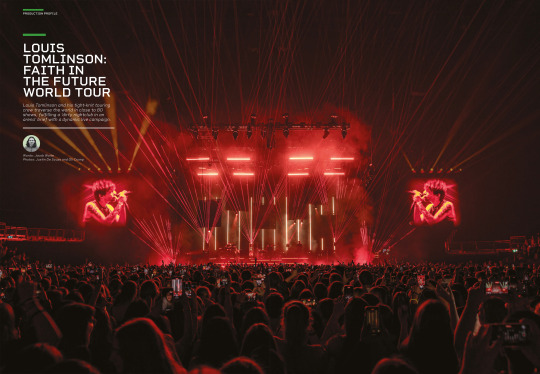
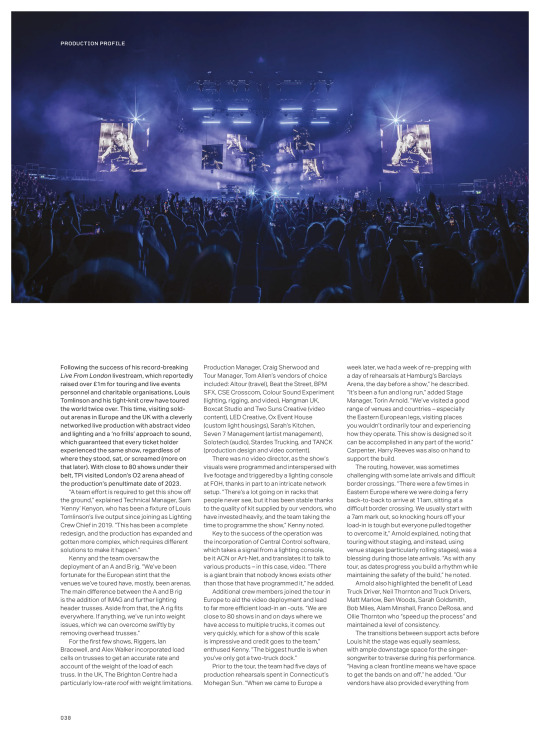
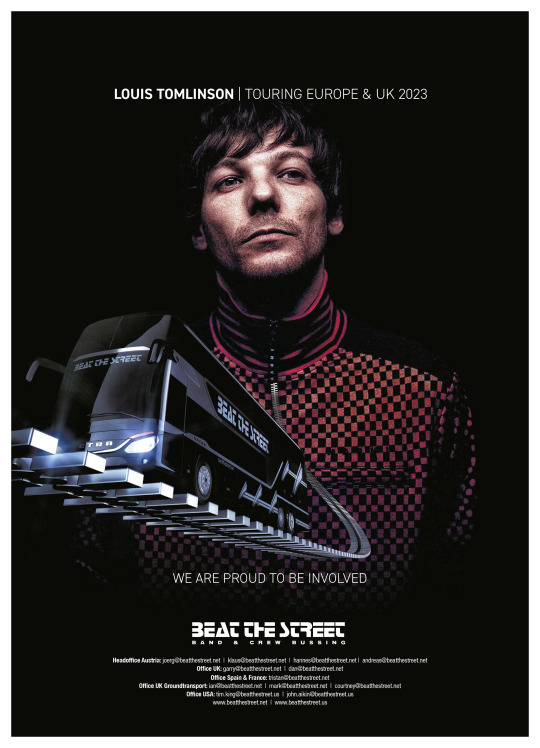
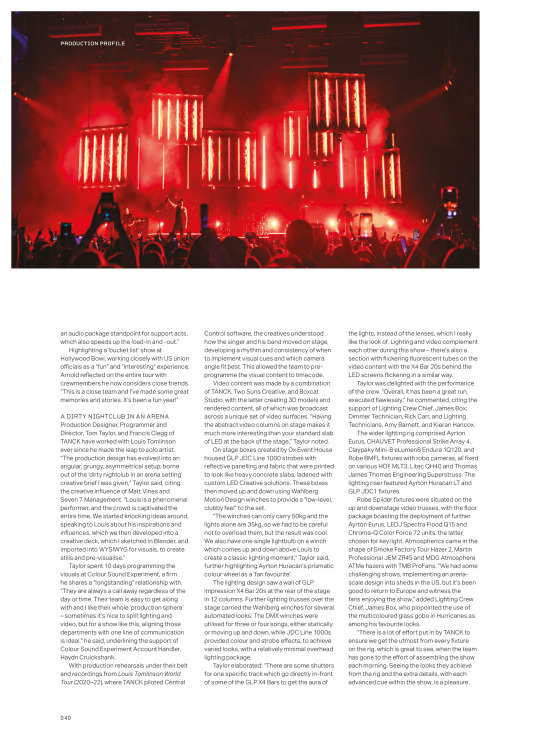

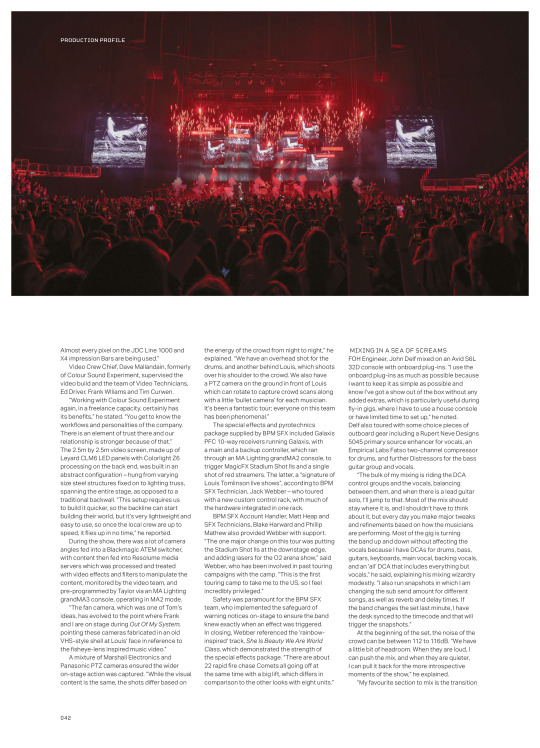
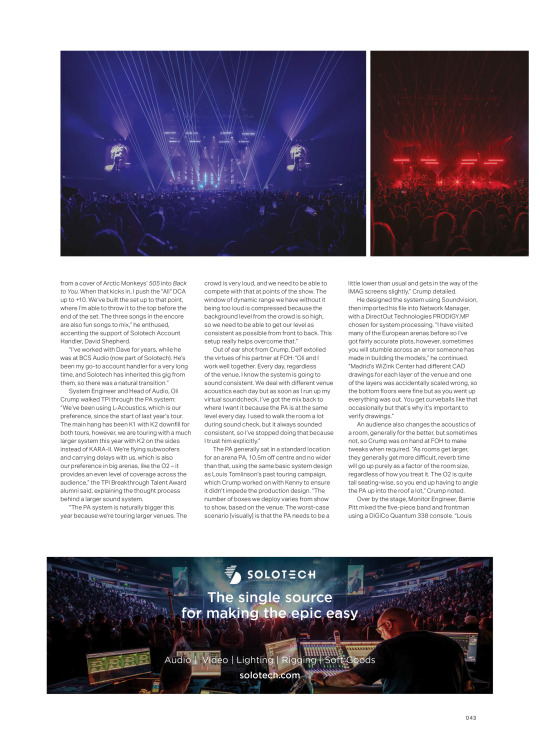
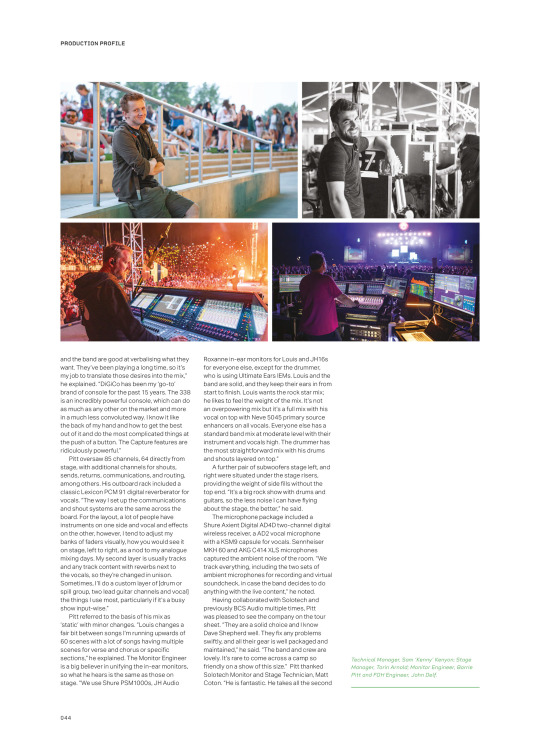

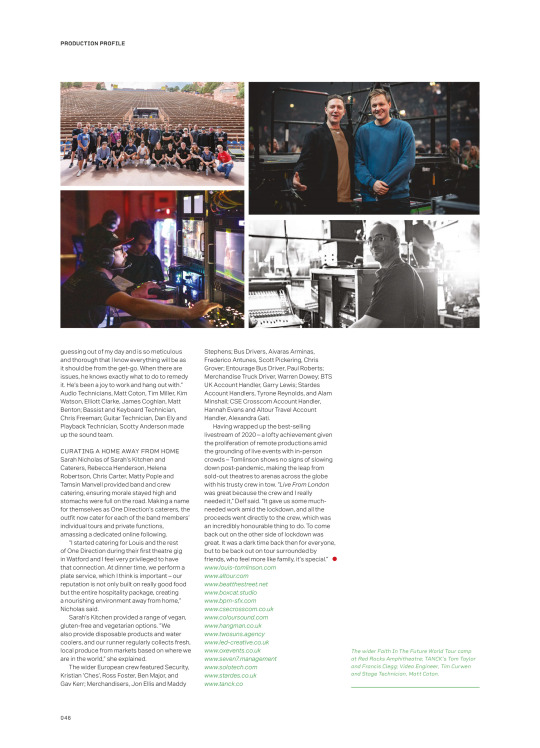
‘A dirty nightclub in an arena’ – behind Louis Tomlinson’s Faith In The Future World Tour
Louis Tomlinson and his tight-knit touring crew traverse the world in close to 80 shows, fulfilling a ‘dirty nightclub in an arena’ brief with a dynamic live campaign.
Production Profiles 5 January 2024
Following the success of his record-breaking Live From London livestream, which reportedly raised over £1m for touring and live events personnel and charitable organisations, Louis Tomlinson and his tight-knit crew have toured the world twice over. This time, visiting sold-out arenas in Europe and the UK with a cleverly networked live production with abstract video and lighting and a ‘no frills’ approach to sound, which guaranteed that every ticket holder experienced the same show, regardless of where they stood, sat, or screamed (more on that later). With close to 80 shows under their belt, TPi visited London’s O2 arena ahead of the production’s penultimate date of 2023.
Words: Jacob Waite Photos: Justin De Souza and Oli Crump
------
Following the success of his record-breaking Live From London livestream, which reportedly raised over £1m for touring and live events personnel and charitable organisations, Louis Tomlinson and his tight-knit crew have toured the world twice over. This time, visiting sold-out arenas in Europe and the UK with a cleverly networked live production with abstract video and lighting and a ‘no frills’ approach to sound, which guaranteed that every ticket holder experienced the same show, regardless of where they stood, sat, or screamed (more on that later). With close to 80 shows under their belt, TPi visited London’s O2 arena ahead of the production’s penultimate date of 2023.
“A team effort is required to get this show off the ground,” explained Technical Manager, Sam ‘Kenny’ Kenyon, who has been a fixture of Louis Tomlinson’s live output since joining as Lighting Crew Chief in 2019. “This has been a complete redesign, and the production has expanded and gotten more complex, which requires different solutions to make it happen.”
Kenny and the team oversaw the deployment of an A and B rig. “We’ve been fortunate for the European stint that the venues we’ve toured have, mostly, been arenas. The main difference between the A and B rig is the addition of IMAG and further lighting header trusses. Aside from that, the A rig fits everywhere. If anything, we’ve run into weight issues, which we can overcome swiftly by removing overhead trusses.”
For the first few shows, Riggers, Ian Bracewell, and Alex Walker incorporated load cells on trusses to get an accurate rate and account of the weight of the load of each truss. In the UK, The Brighton Centre had a particularly low-rate roof with weight limitations. Production Manager, Craig Sherwood and Tour Manager, Tom Allen’s vendors of choice included: Altour (travel), Beat the Street, BPM SFX, CSE Crosscom, Colour Sound Experiment (lighting, rigging, and video), Hangman UK, Boxcat Studio and Two Suns Creative (video content), LED Creative, Ox Event House (custom light housings), Sarah’s Kitchen, Seven 7 Management (artist management), Solotech (audio), Stardes Trucking, and TANCK (production design and video content).
There was no video director, as the show’s visuals were programmed and interspersed with live footage and triggered by a lighting console at FOH, thanks in part to an intricate network setup. “There’s a lot going on in racks that people never see, but it has been stable thanks to the quality of kit supplied by our vendors, who have invested heavily, and the team taking the time to programme the show,” Kenny noted.
Key to the success of the operation was the incorporation of Central Control software, which takes a signal from a lighting console, be it ACN or Art-Net, and translates it to talk to various products – in this case, video. “There is a giant brain that nobody knows exists other than those that have programmed it,” he added.
Additional crew members joined the tour in Europe to aid the video deployment and lead to far more efficient load-in an -outs. “We are close to 80 shows in and on days where we have access to multiple trucks, it comes out very quickly, which for a show of this scale is impressive and credit goes to the team,” enthused Kenny. “The biggest hurdle is when you’ve only got a two-truck dock.”
Prior to the tour, the team had five days of production rehearsals spent in Connecticut’s Mohegan Sun. “When we came to Europe a week later, we had a week of re-prepping with a day of rehearsals at Hamburg’s Barclays Arena, the day before a show,” he described. “It’s been a fun and long run,” added Stage Manager, Torin Arnold. “We’ve visited a good range of venues and countries – especially the Eastern European legs, visiting places you wouldn’t ordinarily tour and experiencing how they operate. This show is designed so it can be accomplished in any part of the world.” Carpenter, Harry Reeves was also on hand to support the build.
The routing, however, was sometimes challenging with some late arrivals and difficult border crossings. “There were a few times in Eastern Europe where we were doing a ferry back-to-back to arrive at 11am, sitting at a difficult border crossing. We usually start with a 7am mark out, so knocking hours off your load-in is tough but everyone pulled together to overcome it,” Arnold explained, noting that touring without staging, and instead, using venue stages (particularly rolling stages), was a blessing during those late arrivals. “As with any tour, as dates progress you build a rhythm while maintaining the safety of the build,” he noted.
Arnold also highlighted the benefit of Lead Truck Driver, Neil Thornton and Truck Drivers, Matt Marlow, Ben Woods, Sarah Goldsmith, Bob Miles, Alam Minshall, Franco DeRosa, and Ollie Thornton who “speed up the process” and maintained a level of consistency.
The transitions between support acts before Louis hit the stage was equally seamless, with ample downstage space for the singer-songwriter to traverse during his performance. “Having a clean frontline means we have space to get the bands on and off,” he added. “Our vendors have also provided everything from an audio package standpoint for support acts, which also speeds up the load-in and -out.”
Highlighting a ‘bucket list’ show at Hollywood Bowl, working closely with US union officials as a “fun” and “interesting” experience, Arnold reflected on the entire tour with crewmembers he now considers close friends. “This is a close team and I’ve made some great memories and stories. It’s been a fun year!”
A DIRTY NIGHTCLUB IN AN ARENA Production Designer, Programmer and Director, Tom Taylor, and Francis Clegg of TANCK have worked with Louis Tomlinson ever since he made the leap to solo artist. “The production design has evolved into an angular, grungy, asymmetrical setup, borne out of the ‘dirty nightclub in an arena setting’ creative brief I was given,” Taylor said, citing the creative influence of Matt Vines and Seven 7 Management. “Louis is a phenomenal performer, and the crowd is captivated the entire time. We started knocking ideas around, speaking to Louis about his inspirations and influences, which we then developed into a creative deck, which I sketched in Blender, and imported into WYSIWYG for visuals, to create stills and pre-visualise.”
Taylor spent 10 days programming the visuals at Colour Sound Experiment, a firm he shares a “longstanding” relationship with. “They are always a call away regardless of the day or time. Their team is easy to get along with and I like their whole ‘production sphere’ – sometimes it’s nice to split lighting and video, but for a show like this, aligning those departments with one line of communication is ideal,” he said, underlining the support of Colour Sound Experiment Account Handler, Haydn Cruickshank.
With production rehearsals under their belt and recordings from Louis Tomlinson World Tour (2020–22), where TANCK piloted Central Control software, the creatives understood how the singer and his band moved on stage, developing a rhythm and consistency of when to implement visual cues and which camera angle fit best. This allowed the team to pre-programme the visual content to timecode.
Video content was made by a combination of TANCK, Two Suns Creative, and Boxcat Studio, with the latter creating 3D models and rendered content, all of which was broadcast across a unique set of video surfaces. “Having the abstract video columns on stage makes it much more interesting than your standard slab of LED at the back of the stage,” Taylor noted.
On stage boxes created by Ox Event House housed GLP JDC Line 1000 strobes with reflective panelling and fabric that were printed to look like heavy concrete slabs, ladened with custom LED Creative solutions. These boxes then moved up and down using Wahlberg Motion Design winches to provide a “low-level, clubby feel” to the set.
“The winches can only carry 50kg and the lights alone are 35kg, so we had to be careful not to overload them, but the result was cool. We also have one single lightbulb on a winch which comes up and down above Louis to create a classic lighting moment,” Taylor said, further highlighting Ayrton Huracán’s prismatic colour wheel as a ‘fan favourite’.
The lighting design saw a wall of GLP impression X4 Bar 20s at the rear of the stage in 12 columns. Further lighting trusses over the stage carried the Wahlberg winches for several automated looks. The DMX winches were utilised for three or four songs, either statically or moving up and down, while JDC Line 1000s provided colour and strobe effects, to achieve varied looks, with a relatively minimal overhead lighting package.
Taylor elaborated: “There are some shutters for one specific track which go directly in-front of some of the GLP X4 Bars to get the aura of the lights, instead of the lenses, which I really like the look of. Lighting and video complement each other during this show – there’s also a section with flickering fluorescent tubes on the video content with the X4 Bar 20s behind the LED screens flickering in a similar way.
Taylor was delighted with the performance of the crew. “Overall, it has been a great run, executed flawlessly,” he commented, citing the support of Lighting Crew Chief, James Box; Dimmer Technician, Rick Carr, and Lighting Technicians, Amy Barnett, and Kieran Hancox.
The wider lighting rig comprised Ayrton Eurus, CHAUVET Professional Strike Array 4, Claypaky Mini-B eLumen8 Endura 1Q120, and Robe BMFL fixtures with robo cameras, all fixed on various HOF MLT3, Litec QH40 and Thomas James Thomas Engineering Superstruss. The lighting riser featured Ayrton Huracan LT and GLP JDC1 fixtures.
Robe Spiider fixtures were situated on the up and downstage video trusses, with the floor package boasting the deployment of further Ayrton Eurus, LEDJ Spectra Flood Q15 and Chroma-Q Color Force 72 units, the latter chosen for key light. Atmospherics came in the shape of Smoke Factory Tour Hazer 2, Martin Professional JEM ZR45 and MDG Atmosphere ATMe hazers with TMB ProFans. “We had some challenging shows, implementing an arena-scale design into sheds in the US, but it’s been good to return to Europe and witness the fans enjoying the show,” added Lighting Crew Chief, James Box, who pinpointed the use of the multicoloured glass gobo in Hurricanes as among his favourite looks.
“There is a lot of effort put in by TANCK to ensure we get the utmost from every fixture on the rig, which is great to see, when the team has gone to the effort of assembling the show each morning. Seeing the looks they achieve from the rig and the extra details, with each advanced cue within the show, is a pleasure.
Almost every pixel on the JDC Line 1000 and X4 impression Bars are being used.”
Video Crew Chief, Dave Mallandain, formerly of Colour Sound Experiment, supervised the video build and the team of Video Technicians, Ed Driver, Frank Wlliams and Tim Curwen.
“Working with Colour Sound Experiment again, in a freelance capacity, certainly has its benefits,” he stated. “You get to know the workflows and personalities of the company. There is an element of trust there and our relationship is stronger because of that.” The 2.5m by 2.5m video screen, made up of Leyard CLM6 LED panels with Colorlight Z6 processing on the back end, was built in an abstract configuration – hung from varying size steel structures fixed on to lighting truss, spanning the entire stage, as opposed to a traditional backwall. “This setup requires us to build it quicker, so the backline can start building their world, but it’s very lightweight and easy to use, so once the local crew are up to speed, it flies up in no time,” he reported.
During the show, there was a lot of camera angles fed into a Blackmagic ATEM switcher, with content then fed into Resolume media servers which was processed and treated with video effects and filters to manipulate the content, monitored by the video team, and pre-programmed by Taylor via an MA Lighting grandMA3 console, operating in MA2 mode.
“The fan camera, which was one of Tom’s ideas, has evolved to the point where Frank and I are on stage during Out Of My System, pointing these cameras fabricated in an old VHS-style shell at Louis’ face in reference to the fisheye-lens inspired music video.”
A mixture of Marshall Electronics and Panasonic PTZ cameras ensured the wider on-stage action was captured. “While the visual content is the same, the shots differ based on the energy of the crowd from night to night,” he explained. “We have an overhead shot for the drums, and another behind Louis, which shoots over his shoulder to the crowd. We also have a PTZ camera on the ground in front of Louis which can rotate to capture crowd scans along with a little ‘bullet camera’ for each musician. It’s been a fantastic tour; everyone on this team has been phenomenal.”
The special effects and pyrotechnics package supplied by BPM SFX included Galaxis PFC 10-way receivers running Galaxis, with a main and a backup controller, which ran through an MA Lighting grandMA2 console, to trigger MagicFX Stadium Shot IIs and a single shot of red streamers. The latter, a “signature of Louis Tomlinson live shows”, according to BPM SFX Technician, Jack Webber – who toured with a new custom control rack, with much of the hardware integrated in one rack.
BPM SFX Account Handler, Matt Heap and SFX Technicians, Blake Harward and Phillip Mathew also provided Webber with support. “The one major change on this tour was putting the Stadium Shot IIs at the downstage edge, and adding lasers for the O2 arena show,” said Webber, who has been involved in past touring campaigns with the camp. “This is the first touring camp to take me to the US, so I feel incredibly privileged.”
Safety was paramount for the BPM SFX team, who implemented the safeguard of warning notices on-stage to ensure the band knew exactly when an effect was triggered. In closing, Webber referenced the ‘rainbow-inspired’ track, She Is Beauty We Are World Class, which demonstrated the strength of the special effects package. “There are about 22 rapid fire chase Comets all going off at the same time with a big lift, which differs in comparison to the other looks with eight units.”
MIXING IN A SEA OF SCREAMS FOH Engineer, John Delf mixed on an Avid S6L 32D console with onboard plug-ins. “I use the onboard plug-ins as much as possible because I want to keep it as simple as possible and know I’ve got a show out of the box without any added extras, which is particularly useful during fly-in gigs, where I have to use a house console or have limited time to set up,” he noted. Delf also toured with some choice pieces of outboard gear including a Rupert Neve Designs 5045 primary source enhancer for vocals, an Empirical Labs Fatso two-channel compressor for drums, and further Distressors for the bass guitar group and vocals.
“The bulk of my mixing is riding the DCA control groups and the vocals, balancing between them, and when there is a lead guitar solo, I’ll jump to that. Most of the mix should stay where it is, and I shouldn’t have to think about it, but every day you make major tweaks and refinements based on how the musicians are performing. Most of the gig is turning the band up and down without affecting the vocals because I have DCAs for drums, bass, guitars, keyboards, main vocal, backing vocals, and an ‘all’ DCA that includes everything but vocals,” he said, explaining his mixing wizardry modestly. “I also run snapshots in which I am changing the sub send amount for different songs, as well as reverb and delay times. If the band changes the set last minute, I have the desk synced to the timecode and that will trigger the snapshots.”
At the beginning of the set, the noise of the crowd can be between 112 to 116dB. “We have a little bit of headroom. When they are loud, I can push the mix, and when they are quieter, I can pull it back for the more introspective moments of the show,” he explained.
“My favourite section to mix is the transition from a cover of Arctic Monkeys’ 505 into Back to You. When that kicks in, I push the “All” DCA up to +10. We’ve built the set up to that point, where I’m able to throw it to the top before the end of the set. The three songs in the encore are also fun songs to mix,” he enthused, accenting the support of Solotech Account Handler, David Shepherd.
“I’ve worked with Dave for years, while he was at BCS Audio (now part of Solotech). He’s been my go-to account handler for a very long time, and Solotech has inherited this gig from them, so there was a natural transition.”
System Engineer and Head of Audio, Oli Crump walked TPi through the PA system: “We’ve been using L-Acoustics, which is our preference, since the start of last year’s tour. The main hang has been K1 with K2 downfill for both tours, however, we are touring with a much larger system this year with K2 on the sides instead of KARA-II. We’re flying subwoofers and carrying delays with us, which is also our preference in big arenas, like the O2 – it provides an even level of coverage across the audience,” the TPi Breakthrough Talent Award alumni said, explaining the thought process behind a larger sound system.
“The PA system is naturally bigger this year because we’re touring larger venues. The crowd is very loud, and we need to be able to compete with that at points of the show. The window of dynamic range we have without it being too loud is compressed because the background level from the crowd is so high, so we need to be able to get our level as consistent as possible from front to back. This setup really helps overcome that.”
Out of ear shot from Crump, Delf extolled the virtues of his partner at FOH: “Oli and I work well together. Every day, regardless of the venue, I know the system is going to sound consistent. We deal with different venue acoustics each day but as soon as I run up my virtual soundcheck, I’ve got the mix back to where I want it because the PA is at the same level every day. I used to walk the room a lot during sound check, but it always sounded consistent, so I’ve stopped doing that because I trust him explicitly.”
The PA generally sat in a standard location for an arena PA, 10.5m off centre and no wider than that, using the same basic system design as Louis Tomlinson’s past touring campaign, which Crump worked on with Kenny to ensure it didn’t impede the production design. “The number of boxes we deploy varies from show to show, based on the venue. The worst-case scenario [visually] is that the PA needs to be a little lower than usual and gets in the way of the IMAG screens slightly,” Crump detailed.
He designed the system using Soundvision, then imported his file into Network Manager, with a DirectOut Technologies PRODIGY.MP chosen for system processing. “I have visited many of the European arenas before so I’ve got fairly accurate plots, however, sometimes you will stumble across an error someone has made in building the models,” he continued. “Madrid’s WiZink Center had different CAD drawings for each layer of the venue and one of the layers was accidentally scaled wrong, so the bottom floors were fine but as you went up everything was out. You get curveballs like that occasionally but that’s why it’s important to verify drawings.”
An audience also changes the acoustics of a room, generally for the better, but sometimes not, so Crump was on hand at FOH to make tweaks when required. “As rooms get larger, they generally get more difficult, reverb time will go up purely as a factor of the room size, regardless of how you treat it. The O2 is quite tall seating-wise, so you end up having to angle the PA up into the roof a lot,” Crump noted.
Over by the stage, Monitor Engineer, Barrie Pitt mixed the five-piece band and frontman using a DiGiCo Quantum 338 console. “Louis and the band are good at verbalising what they want. They’ve been playing a long time, so it’s my job to translate those desires into the mix,” he explained. “DiGiCo has been my ‘go-to’ brand of console for the past 15 years. The 338 is an incredibly powerful console, which can do as much as any other on the market and more in a much less convoluted way. I know it like the back of my hand and how to get the best out of it and do the most complicated things at the push of a button. The Capture features are ridiculously powerful.”
Pitt oversaw 85 channels, 64 directly from stage, with additional channels for shouts, sends, returns, communications, and routing, among others. His outboard rack included a classic Lexicon PCM 91 digital reverberator for vocals. “The way I set up the communications and shout systems are the same across the board. For the layout, a lot of people have instruments on one side and vocal and effects on the other, however, I tend to adjust my banks of faders visually, how you would see it on stage, left to right, as a nod to my analogue mixing days. My second layer is usually tracks and any track content with reverbs next to the vocals, so they’re changed in unison. Sometimes, I’ll do a custom layer of [drum or spill group, two lead guitar channels and vocal] the things I use most, particularly if it’s a busy show input-wise.”
Pitt referred to the basis of his mix as ‘static’ with minor changes. “Louis changes a fair bit between songs I’m running upwards of 60 scenes with a lot of songs having multiple scenes for verse and chorus or specific sections,” he explained. The Monitor Engineer is a big believer in unifying the in-ear monitors, so what he hears is the same as those on stage. “We use Shure PSM1000s, JH Audio Roxanne in-ear monitors for Louis and JH16s for everyone else, except for the drummer, who is using Ultimate Ears IEMs. Louis and the band are solid, and they keep their ears in from start to finish. Louis wants the rock star mix; he likes to feel the weight of the mix. It’s not an overpowering mix but it’s a full mix with his vocal on top with Neve 5045 primary source enhancers on all vocals. Everyone else has a standard band mix at moderate level with their instrument and vocals high. The drummer has the most straightforward mix with his drums and shouts layered on top.”
A further pair of subwoofers stage left, and right were situated under the stage risers, providing the weight of side fills without the top end. “It’s a big rock show with drums and guitars, so the less noise I can have flying about the stage, the better,” he said.
The microphone package included a Shure Axient Digital AD4D two-channel digital wireless receiver, a AD2 vocal microphone with a KSM9 capsule for vocals. Sennheiser MKH 60 and AKG C414 XLS microphones captured the ambient noise of the room. “We track everything, including the two sets of ambient microphones for recording and virtual soundcheck, in case the band decides to do anything with the live content,” he noted.
Having collaborated with Solotech and previously BCS Audio multiple times, Pitt was pleased to see the company on the tour sheet. “They are a solid choice and I know Dave Shepherd well. They fix any problems swiftly, and all their gear is well packaged and maintained,” he said. “The band and crew are lovely. It’s rare to come across a camp so friendly on a show of this size.” Pitt thanked Solotech Monitor and Stage Technician, Matt Coton. “He is fantastic. He takes all the second guessing out of my day and is so meticulous and thorough that I know everything will be as it should be from the get-go. When there are issues, he knows exactly what to do to remedy it. He’s been a joy to work and hang out with.”
Audio Technicians, Matt Coton, Tim Miller, Kim Watson, Elliott Clarke, James Coghlan, Matt Benton; Bassist and Keyboard Technician, Chris Freeman; Guitar Technician, Dan Ely and Playback Technician, Scotty Anderson made up the sound team.
CURATING A HOME AWAY FROM HOME Sarah Nicholas of Sarah’s Kitchen and Caterers, Rebecca Henderson, Helena Robertson, Chris Carter, Matty Pople and Tamsin Manvell provided band and crew catering, ensuring morale stayed high and stomachs were full on the road. Making a name for themselves as One Direction’s caterers, the outfit now cater for each of the band members’ individual tours and private functions, amassing a dedicated online following. “I started catering for Louis and the rest of One Direction during their first theatre gig in Watford and I feel very privileged to have that connection. At dinner time, we perform a plate service, which I think is important – our reputation is not only built on really good food but the entire hospitality package, creating a nourishing environment away from home,” Nicholas said.
Sarah’s Kitchen provided a range of vegan, gluten-free and vegetarian options. “We also provide disposable products and water coolers, and our runner regularly collects fresh, local produce from markets based on where we are in the world,” she explained.
The wider European crew featured Security, Kristian ‘Ches’, Ross Foster, Ben Major, and Gav Kerr; Merchandisers, Jon Ellis and Maddy Stephens; Bus Drivers, Aivaras Arminas, Frederico Antunes, Scott Pickering, Chris Grover; Entourage Bus Driver, Paul Roberts; Merchandise Truck Driver, Warren Dowey; BTS UK Account Handler, Garry Lewis; Stardes Account Handlers, Tyrone Reynolds, and Alam Minshall; CSE Crosscom Account Handler, Hannah Evans and Altour Travel Account Handler, Alexandra Gati.
Having wrapped up the best-selling livestream of 2020 – a lofty achievement given the proliferation of remote productions amid the grounding of live events with in-person crowds – Tomlinson shows no signs of slowing down post-pandemic, making the leap from sold-out theatres to arenas across the globe with his trusty crew in tow. “Live From London was great because the crew and I really needed it,” Delf said. “It gave us some much-needed work amid the lockdown, and all the proceeds went directly to the crew, which was an incredibly honourable thing to do. To come back out on the other side of lockdown was great. It was a dark time back then for everyone, but to be back out on tour surrounded by friends, who feel more like family, it’s special.”
-> read here on Issuu
#louis#fitf tour#fitfwt#lt crew#tpi magazine#05.01.24#article#touring#thank youu omglarryrabbit ;)#love getting to peek behind the scenes this is great
101 notes
·
View notes
Text
It was one of O’Rourke’s first times doing drugs, but he didn’t hold back. Armed with cannabis edibles, cocaine, ketamine, and booze, he partied for nearly 12 nights consecutively last August, during which time he claims to have raved for 60 hours—all without ever leaving his apartment. (He did take bathroom breaks and managed to eat a steak.) In the past 18 months, the 38-year-old IT worker from Dublin, who did not want his first name used due to privacy reasons, has partied on virtual reality platform VRChat every weekend, often staying up until 8 am, suited up in goggles and a full set of motion trackers.
“There’s a lot of weird shit going on, and it can be hard to adjust, but if you do it's magical,” he tells WIRED. “If you're not able to self-moderate and police yourself, it’s endless. You're not going to win; you're not going to see the end of the party.” O’Rourke is one of many who may struggle with the fantastical, escapist allure of having access to a nearly nonstop, wild metaverse party from the comfort of their own homes. Especially when he normally doesn’t have plans with friends in the real world.
Before Covid-19 lockdowns, there had barely ever been more than 20,000 concurrent users on VRChat—but its popularity has since exploded. More than 130,000 people locked into VRChat on New Year’s Day this year, according to a VR culture blog, and there are dozens of weekly VR parties thanks to organizers across the US, Europe, and Asia. Once inside the VRChat metaverse, users—who describe it to WIRED as an immersive, futuristic utopia—can choose which “maps,” or parties, they wish to explore in the form of their avatars.
Meanwhile, traditional clubs in the US and the UK are closing at an alarming rate—casualties of rising costs, lower profits, and, in places, onerous regulations around noise levels, security requirements, and closing times. The infinite amount of space available on VR, plus the lack of regulation, allows creators to blissfully ignore the economic pressures that limit nightlife in many places today. VR venues don’t charge for entry, so the main cost is hardware, which can exceed $5,000 with a high-quality gaming PC and full-body tracking devices, although a simpler setup with just a Meta Quest headset can be procured for as little as $350. There are, however, often long lines to get into the most popular virtual club nights, since they are all capped to 80 people each due to the limits of the software on the VRChat platform, which is available through host Steam.
WIRED spoke to 12 people who are engrossed in the scene, from trans people who feel safer partying in VR to introverts and seniors who find it more welcoming. It’s even spawning underground VR sex and drug subcultures, with erotic club nights and venues meant to mimic the effect of psychedelics. O’Rourke and other enthusiasts say they’ve clocked up drug-fueled, marathon dance sessions all without many of the stressors of traditional club nights.
O’Rourke, an introvert who is self-conscious about his 5-foot-4 height, co-runs a party called Euro-Corp, which resembles a traditional club space, with a narrow, wooden-looking dance floor and a DJ booth overlooking it all. He says he is putting in so many hours—almost 1,800 at the time of writing—because he feels now is the “high-water-mark moment” for the scene. “When people look back in 10 or 20 years, they’ll say now was its peak. That’s why I’m partying so hard.”
But he admits he overdoes it sometimes. “I accidentally did a heroic dose [of mushrooms], and it was a bit of a mess,” he says of a March 2024 trip during which he could not distinguish between his hallucinations and the VR world. “I haven’t taken shrooms since because it was a bit heavy.” Since then, he has decided that ketamine “synergizes most with VR,” because it enhances the levels of immersion to render the virtual reality more real.
Others, like Heelix, a 61-year-old VR DJ from Berlin who has spent nearly 5,000 hours in VR—the equivalent of about 200 days—struggle to control their drinking. “I think it's a little bit dangerous,” he says. “I’ve seen people going overboard, and [their avatars] suddenly disappearing.” Another VR party promoter says, “Because of the headset, you don’t realize how drunk you are till you take it off.” One partier says he has had friends who have needed their stomachs to be pumped after marathon drinking sessions on VRChat.
But socially awkward individuals, homebodies, and LGBT people tell WIRED that VR raves are secure and surreal spaces where, through their avatars, folks can metamorphose into whatever form they wish.
Ru, a trans woman from rural Ohio who works as a hospice nurse, says VRChat provides her a safer environment than she might find in real life. “I get sexually assaulted far less often,” says Ru, 48, who didn’t want to use her real name for professional reasons. “I'm a trans woman, and I live in the middle of a red state. Sometimes you don't want to go to that local place and deal with all of that shit.” Plus, she says that the music that DJs on VRChat play is just better than at the clubs in Ohio she has been to. “The music is unbelievable,” she says. “Go listen to your local people, and then come to any random club in VR; you're going to be shocked that your local DJs suck ass.” Ru’s virtual club, Kaleidosky, looks like the inside of a shape-shifting kaleidoscope, bending the laws of physics with all the fractal visions of a DMT trip. Her VR success as a DJ has even led her to play physical shows in Japan, although she was not the headliner. “My life has been expanded in ways that I can hardly relate to you,” she says, “all because of VR and how it brings all these different, immensely creative people together.”
Luna, a VR raver from the Netherlands, was suffering from poor mental health, unemployed, and socially alienated when she first went on VRChat at the age of 19 in 2022. “I was really depressed,” she recalls. “I didn't have work. I didn't have real friends. I was stuck at home.” But, like many before her, discovering raving changed everything. “It was like a way to experience new things, new worlds,” she says. “I loved it instantly.” She has partied so hard from her living room that her neighbors have complained. “I can dance quite wildly.”
Just like she would in the physical world, Luna developed an entire group of friends from VR rave encounters. They now pre-drink together before heading out at the weekends in VR, and sometimes they even take MDMA as a group, from their individual silos. Her first trip came in her first few months VR raving, when a friend of hers in Australia said she was going to take the euphoria-inducing drug, and fellow raver Benji, who also lives in the Netherlands, offered to mail a dose of a legal version of MDMA to Luna’s house. Later, at an in-person rave organized by a VR club, she connected with Benji; they’ve now been a couple for two and a half years, and he goes on VR far less.
But others get hooked on the platform’s rave scene, even though the experience cannot fully replicate the neurochemical correlates of a real rave, says Maria Balaet, a research associate in the department of neuroimaging studies at Imperial College London. Prolonged drug use in VR could also amplify sensory overload and cognitive fatigue, raising the risk of dissociation and having a bad trip, she warns. “Having a bad trip in VR is probably worse than a bad trip outside of VR, because once one comes out of the VR environment their body and mind needs to readjust to the world too, and that is taxing in addition to the bad trip itself.” She adds that drug use in VR could bring about a “false outward experience,” in which an individual has an inner experience in an artificially designed context. “I am not sure how long one can stay in this state without feeling disconnected or disoriented,” Balaet cautions.
Some VR ravers say they've found real-life partners and friends through virtual partying. Photograph: @ayase_
Benji and Luna first connected romantically in person, but sometimes one thing can lead to another on VRChat—with or without drugs. Through the use of VR rooms and custom avatars with adult capabilities, clothing can be removed and certain “gestures” can be performed to simulate sex. The explicit phenomenon, tucked away in private metaverse spaces, has spawned whole categories of pornographic videos on adult websites, where VR users record themselves having sex. “When people engage in ERP [erotic role-play], they typically pick out an avatar to dress the part,” according to an explainer video on how people “do it” in VRChat. “There’s special physics for body parts that can be added to avatars, as well as ‘collision,’ so that other users can interact with them.” This is against VRChat’s terms of service that prohibit creating pornographic content, and these sorts of avatars should be swiftly banned if they are active in a public world.
Heelix’s avatar is a young female anime character, and he describes how loneliness led him to find solace in VR, where he plays shows as a DJ. “All of my friends are old, and they don’t go clubbing anymore,” he says. On the occasions he has gone out by himself he has felt conscious of his greying hair and growing belly. “But here in VR I know a lot of people,” he says. “It's much easier.” Plus, “the way home is very short,” and en route he can even stop by places like one of VRChat’s sex-positive clubs, PSHQ—originally known as Pussy Squad Headquarters—where as many as 20 lap dancers can be tipped during exotic dance nights, and attendees can slope off to a motel area for what the club describes as “NSFW activities.”
Some erotic dancers, like Lichbait, have even developed popular online personas and are profiting from subscriptions, like a VR OnlyFans. PSHQ, according to its creator DeityAnubis, who did not want to be named for privacy reasons, is “a sexually positive adult space with a focus on music. The music, the dancing, the lighting, the atmosphere, the sense of community, the LGBTQ safe space, those are the important parts of PSHQ and make us what we are.”
In January, VRChat introduced age verification on the platform to ensure children were not accessing certain adult spaces, after a BBC investigation found children were able to enter VR strip clubs and could be cajoled into performing virtual sex acts. Zeus Tipado, a PhD candidate researching neuroscience at the University of Maastricht, describes VR as a mammoth social experiment, but it's one that he has increasing concerns about. Some frequent users get progressively less interested in base reality, to a far greater extent than traditional gamers, he warns. The site’s anonymity also provides cover for racist or bigoted behavior.
During one of his forays into VRChat, Tipado says, he was part of a group invited into a man’s apartment. “It was a vibey apartment,” Tipado recalls. “Everyone was watching Power Rangers. I found a nice place to sit down on the sofa, and then this guy comes up in front of everybody and tells people to take off their clothes.” Nobody took off their virtual clothes, and they were soon kicked out of his apartment for failing to comply with the request.
User safety is a top priority, a VRChat spokesperson tells WIRED, and the platform has provided users with a number of tools to protect themselves, such as making it easy to block and report others. “When our trust and safety team receives a report, they have the ability to use metadata and logs to track down and ban problematic users,” they said.
While many might assume that all VR users are on a quest to escape reality, sometimes the parties act as a gateway to live events.
Promoter James Campbell, who runs the popular Shelter map, has held events in New York, San Diego, and Los Angeles playing dubstep, bass, and other electronic music genres to bring VR ravers together.
At Shelter’s first party, in New York, attended by more than 250 people in May 2022 at the now-closed VRWorld in Midtown Manhattan, he says countless people came up to him and said it was their first ever actual rave, telling him: “I didn’t think I’d ever have the confidence to come to a show.”
6 notes
·
View notes
Text
India's Best Banquet Management Software | Wedding Venue Software
Optimize Banquet Management with House of Banquet – India's best Banquet Management Software. Elevate weddings seamlessly with our advanced Wedding Venue Software
1 note
·
View note
Text
Contact Us| Conference Management and Corporate Event Transportation TripKartz
Elevate Corporate Transportation with TripKartz — Where Business Meets Comfort!
Navigate the world of corporate travel seamlessly with TripKartz’s top-tier transportation services. Experience unparalleled efficiency and luxury for your business journeys. 🌟👔
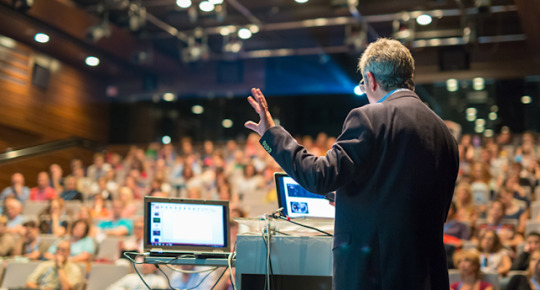
🌟 Key Services:
Executive Transfers: Travel in style with our fleet of executive cars for seamless airport transfers and corporate commuting.
Group Travel Solutions: From team-building outings to corporate events, our luxury coaches are designed for group comfort and convenience.
Event Logistics: Trust TripKartz to manage transportation logistics for corporate events, ensuring smooth coordination and timely arrivals.
Customized Packages: Tailored transportation solutions to align with the unique needs of your corporate agenda.
🔗 Learn more about our Corporate Transportation Services: TripKartz — Contact Us
✨ Why Choose TripKartz for Corporate Transportation? Experience the epitome of corporate travel excellence with TripKartz. Our commitment to reliability, efficiency, and client satisfaction sets us apart as your preferred business travel partner.
🚀 Connect with Us:
Website: TripKartz Corporate
Contact: Corporate Transportation Inquiry
Social: LinkedIn | Twitter
🌈 Let TripKartz be your driving force in corporate transportation. Elevate your business travels with comfort, style, and efficiency! 🌐🏢 #CorporateTransportation #BusinessTravel #TripKartzCorporate #BangaloreBusinessJourneys
Connect with TripKartz for cutting-edge conference management and seamless corporate transportation solutions. Elevate your events with our expertise. Contact us.
#business hotels#Keyword#corporate travel management companies in bangalore#travel management companies in bangalore#corporate meetings#Business events#events and meetings#"corporate travel agents#event venues#meeting venues#meetings and events planning#conference management#extended stay hotels#corporate meetings planning#business transportation#corporate events#corporate event management company#corporate travel management#corporate events and meetings#conference management software#corporate transportation#business car rentals#corporate travel agents#corporate hotels#conference venues
0 notes
Text
Surf Doha: Catch the Thrill with Venly

Get ready to ride the waves! Schedule your surfing experience today.
— in Doha, Qatar.
For more details visit venlyapp.com
#Doha event booking app#Venue booking app in Qatar#adventures booking app in Doha#event booking platform in qatar#event management software#adventures booking app#sports venue booking app in qatar#qatar#venue booking app
0 notes
Text
The Evolution of DJ Controllers: From Analog Beginnings to Intelligent Performance Systems
The DJ controller has undergone a remarkable transformation—what began as a basic interface for beat matching has now evolved into a powerful centerpiece of live performance technology. Over the years, the convergence of hardware precision, software intelligence, and real-time connectivity has redefined how DJs mix, manipulate, and present music to audiences.
For professional audio engineers and system designers, understanding this technological evolution is more than a history lesson—it's essential knowledge that informs how modern DJ systems are integrated into complex live environments. From early MIDI-based setups to today's AI-driven, all-in-one ecosystems, this blog explores the innovations that have shaped DJ controllers into the versatile tools they are today.

The Analog Foundation: Where It All Began
The roots of DJing lie in vinyl turntables and analog mixers. These setups emphasized feel, timing, and technique. There were no screens, no sync buttons—just rotary EQs, crossfaders, and the unmistakable tactile response of a needle on wax.
For audio engineers, these analog rigs meant clean signal paths and minimal processing latency. However, flexibility was limited, and transporting crates of vinyl to every gig was logistically demanding.
The Rise of MIDI and Digital Integration
The early 2000s brought the integration of MIDI controllers into DJ performance, marking a shift toward digital workflows. Devices like the Vestax VCI-100 and Hercules DJ Console enabled control over software like Traktor, Serato, and VirtualDJ. This introduced features such as beat syncing, cue points, and FX without losing physical interaction.
From an engineering perspective, this era introduced complexities such as USB data latency, audio driver configurations, and software-to-hardware mapping. However, it also opened the door to more compact, modular systems with immense creative potential.
Controllerism and Creative Freedom
Between 2010 and 2015, the concept of controllerism took hold. DJs began customizing their setups with multiple MIDI controllers, pad grids, FX units, and audio interfaces to create dynamic, live remix environments. Brands like Native Instruments, Akai, and Novation responded with feature-rich units that merged performance hardware with production workflows.
Technical advancements during this period included:
High-resolution jog wheels and pitch faders
Multi-deck software integration
RGB velocity-sensitive pads
Onboard audio interfaces with 24-bit output
HID protocol for tighter software-hardware response
These tools enabled a new breed of DJs to blur the lines between DJing, live production, and performance art—all requiring more advanced routing, monitoring, and latency optimization from audio engineers.
All-in-One Systems: Power Without the Laptop
As processors became more compact and efficient, DJ controllers began to include embedded CPUs, allowing them to function independently from computers. Products like the Pioneer XDJ-RX, Denon Prime 4, and RANE ONE revolutionized the scene by delivering laptop-free performance with powerful internal architecture.
Key engineering features included:
Multi-core processing with low-latency audio paths
High-definition touch displays with waveform visualization
Dual USB and SD card support for redundancy
Built-in Wi-Fi and Ethernet for music streaming and cloud sync
Zone routing and balanced outputs for advanced venue integration
For engineers managing live venues or touring rigs, these systems offered fewer points of failure, reduced setup times, and greater reliability under high-demand conditions.

Embedded AI and Real-Time Stem Control
One of the most significant breakthroughs in recent years has been the integration of AI-driven tools. Systems now offer real-time stem separation, powered by machine learning models that can isolate vocals, drums, bass, or instruments on the fly. Solutions like Serato Stems and Engine DJ OS have embedded this functionality directly into hardware workflows.
This allows DJs to perform spontaneous remixes and mashups without needing pre-processed tracks. From a technical standpoint, it demands powerful onboard DSP or GPU acceleration and raises the bar for system bandwidth and real-time processing.
For engineers, this means preparing systems that can handle complex source isolation and downstream processing without signal degradation or sync loss.
Cloud Connectivity & Software Ecosystem Maturity
Today’s DJ controllers are not just performance tools—they are part of a broader ecosystem that includes cloud storage, mobile app control, and wireless synchronization. Platforms like rekordbox Cloud, Dropbox Sync, and Engine Cloud allow DJs to manage libraries remotely and update sets across devices instantly.
This shift benefits engineers and production teams in several ways:
Faster changeovers between performers using synced metadata
Simplified backline configurations with minimal drive swapping
Streamlined updates, firmware management, and analytics
Improved troubleshooting through centralized data logging
The era of USB sticks and manual track loading is giving way to seamless, cloud-based workflows that reduce risk and increase efficiency in high-pressure environments.
Hybrid & Modular Workflows: The Return of Customization
While all-in-one units dominate, many professional DJs are returning to hybrid setups—custom configurations that blend traditional turntables, modular FX units, MIDI controllers, and DAW integration. This modularity supports a more performance-oriented approach, especially in experimental and genre-pushing environments.
These setups often require:
MIDI-to-CV converters for synth and modular gear integration
Advanced routing and clock sync using tools like Ableton Link
OSC (Open Sound Control) communication for custom mapping
Expanded monitoring and cueing flexibility
This renewed complexity places greater demands on engineers, who must design systems that are flexible, fail-safe, and capable of supporting unconventional performance styles.
Looking Ahead: AI Mixing, Haptics & Gesture Control
As we look to the future, the next phase of DJ controllers is already taking shape. Innovations on the horizon include:
AI-assisted mixing that adapts in real time to crowd energy
Haptic feedback jog wheels that provide dynamic tactile response
Gesture-based FX triggering via infrared or wearable sensors
Augmented reality interfaces for 3D waveform manipulation
Deeper integration with lighting and visual systems through DMX and timecode sync
For engineers, this means staying ahead of emerging protocols and preparing venues for more immersive, synchronized, and responsive performances.
Final Thoughts
The modern DJ controller is no longer just a mixing tool—it's a self-contained creative engine, central to the live music experience. Understanding its capabilities and the technology driving it is critical for audio engineers who are expected to deliver seamless, high-impact performances in every environment.
Whether you’re building a club system, managing a tour rig, or outfitting a studio, choosing the right gear is key. Sourcing equipment from a trusted professional audio retailer—online or in-store—ensures not only access to cutting-edge products but also expert guidance, technical support, and long-term reliability.
As DJ technology continues to evolve, so too must the systems that support it. The future is fast, intelligent, and immersive—and it’s powered by the gear we choose today.
2 notes
·
View notes